

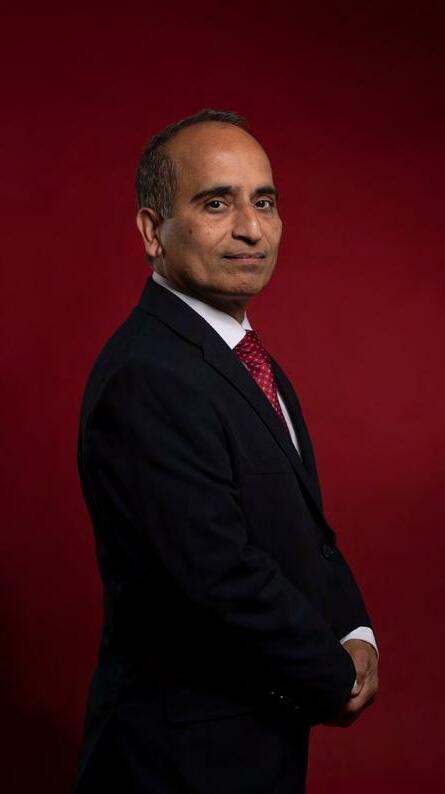
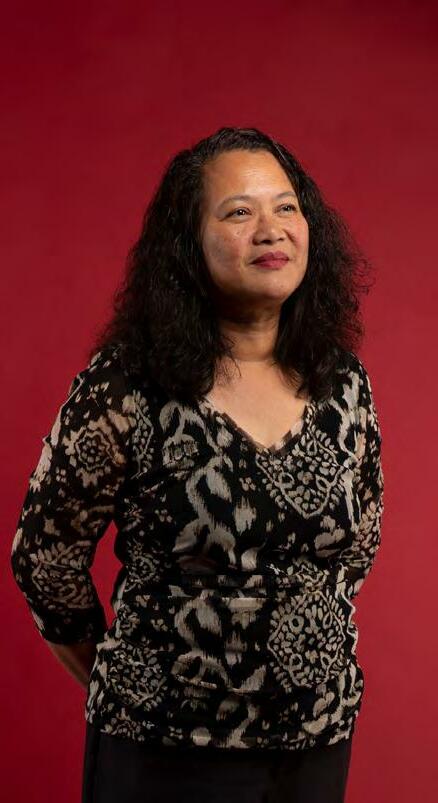

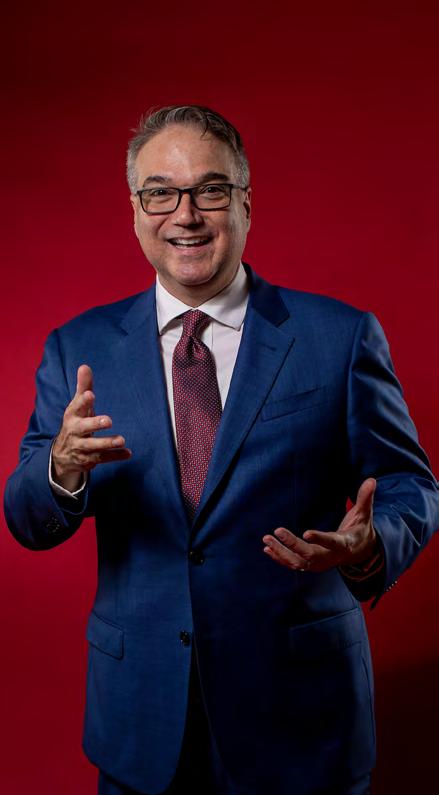 Tina Potterf
Tina Potterf
LEAD DESIGNER
Marissa Leitch
WRITER Allison Nitch
WRITER
Sofia Marti,
MANAGER Terry Lundmark,
PHOTOGRAPHER
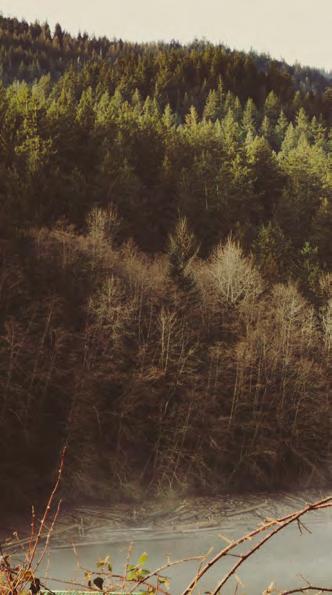 Kalinko
Kalinko
CONTRIBUTING PHOTOGRAPHERS
Nodoka Kondo, Jaidev Vella, Parker Wichelmann
VICE PRESIDENT / UNIVERSITY AFFAIRS Scott McClellan
PRESIDENT / SEATTLE UNIVERSITY Eduardo M. Peñalver
Seattle University Magazine (ISSN: 1550-1523) is published twice a year by Marketing Communications, Seattle University, 901 12th Avenue, PO Box 222000, Seattle, WA 98122-1090. Periodical postage paid at Seattle, Wash. Distributed without charge to alumni and friends of Seattle University. USPS 487-780. Comments and questions about Seattle University Magazine may be addressed to the editor at 206- 296-6111; the address below; fax: 206-2966137; or e-mail: tinap@seattleu.edu. Postmaster: Send address changes to Seattle University Magazine, Marketing Communications, Seattle University, 901 12th Avenue, PO Box 222000, Seattle, WA 98122-1090. Check out the magazine online at www.seattleu.edu/newsroom/.
Seattle University does not discriminate on the basis of race, color, religion, sex, national origin, age, disability, marital status, sexual orientation, gender identity, political ideology or status as a Vietnam-era or special disabled veteran in the administration of any of its education policies, admission policies, scholarship and loan programs, athletics, and other school-administered policies and programs, or in its employment-related policies and practices. All university policies, practices and procedures are administered in a manner consistent with Seattle University’s Catholic and Jesuit identity and character. Inquiries relating to these policies may be referred to the University’s Assistant Vice President for Institutional Equity, Andrea Herrera Katahira at 206-220-8515, katahira@seattleu.edu.
To acknowledge this land is to recognize the peoples who lived and continue to live in this region, whose practices and spiritualities were and are tied to land and water and whose lives continue to enrich and develop in relationship to the land, waters and other inhabitants today.
on the cover:
New Deans Cynthia Dillard, PhD, Amit Shukla, PhD, and Anthony Eudelio Varona, JD, LLM, and Vice Presidents Edgar Gonzalez, Catherine Punsalan-Manlimos, PhD, and Jerron Lowe, JD, usher in impactful changes at the leadership level, helping guide the university into the future.
EDITOR
SENIOR
CONTRIBUTING
’23 PRODUCTION
’82 UNIVERSITY
Yosef
VOLUME 46, ISSUE NUMBER 2, FALL/WINTER 2022-23 MAGAZINE
2 SEATTLE UNIVERSITY MAGAZINE | FALL/WINTER 2022-23
09 talking a good game
Inside the world of SU’s fastestgrowing Esports Club.
06 did you know
A compendium of news around campus and beyond.
08 the art of conversation
A closer look at the Common Text program.
ON THE COVER New deans and VPs reflect the diversity and inclusivity that are foundational to the university’s future.
ART THAT TRANSCENDS Artist and educator
Arturo Araujo, S.J., and students collaborate on an art installation unlike any other.
27 a safe place to land Derrick Belgarde, ’13, ’15 MPA, and his team strive to support a mission of providing sacred space to nurture, affirm and strengthen the spirit of urban Native people.
16 speaking from experience
Assistant Professor Paige Gardner, ’11 MEd, PhD, offers students a unique perspective as a scholar-practitioner.
32 coaching in the game of life Men’s Basketball Coach Chris Victor prepares players for success on and off the court. in memoriam
View this issue's In Memoriam section online at www.seattleu.edu/newsroom.
34 the last word Meet Braelyn Scheer, ’23, the new Student Body President.
30 reflections on the past year
A message from Ellen Whitlock Baker, Assistant VP of Alumni Engagement.
12
18 SEATTLE UNIVERSITY MAGAZINE | FALL/WINTER 2022-23 3
THE SEATTLE U EXPERIENCE

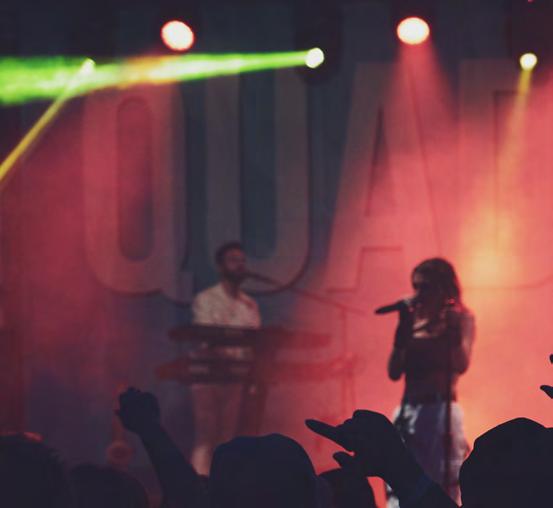

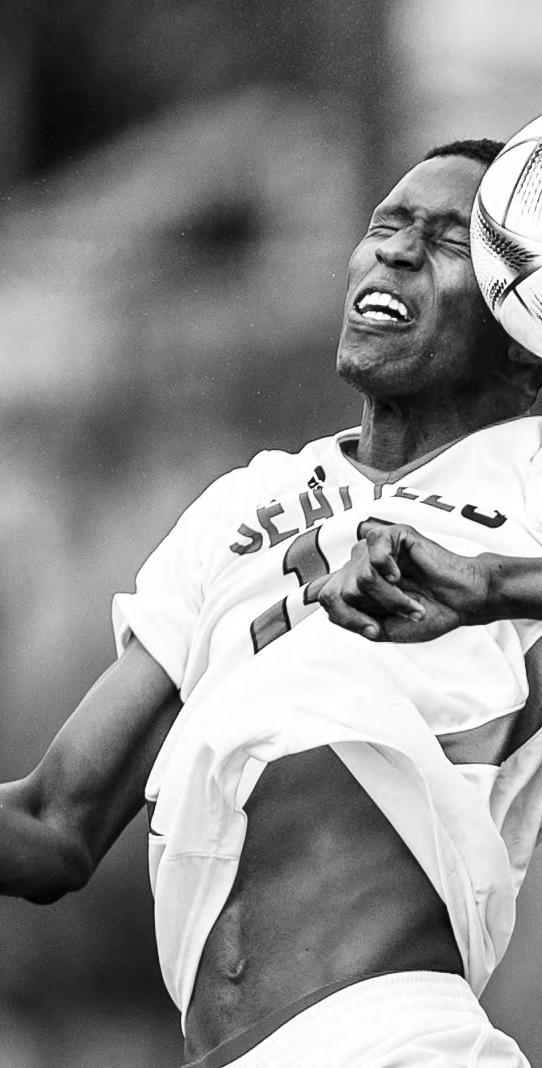
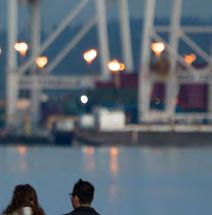
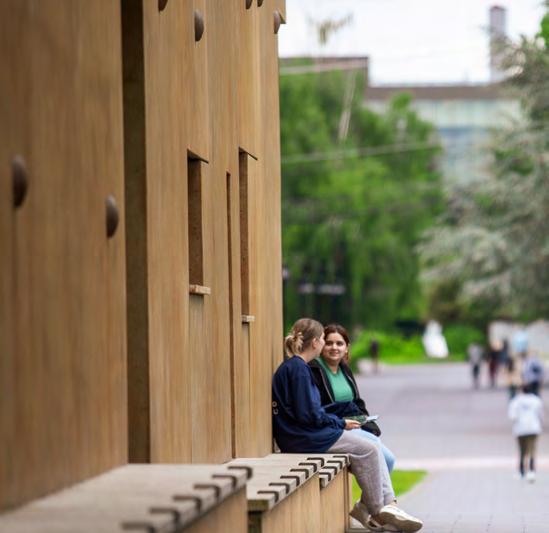



4 SEATTLE UNIVERSITY MAGAZINE | FALL/WINTER 2022-23
With fall quarter underway, first-year and returning students and members of the campus community will be making new memories that will last a lifetime. These are just some of the recent memory-making moments that exemplify life at Seattle University and around the city.
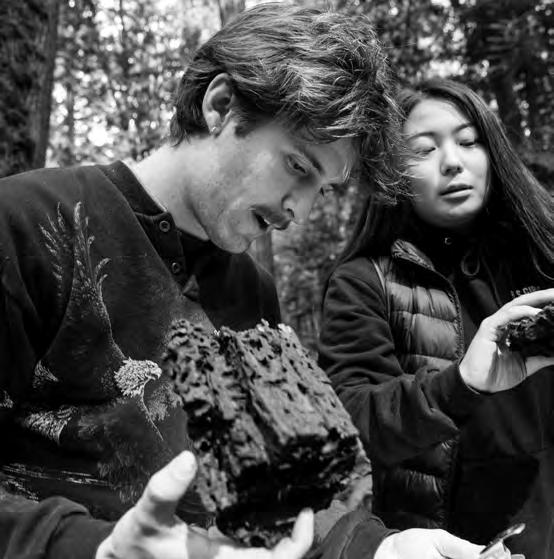
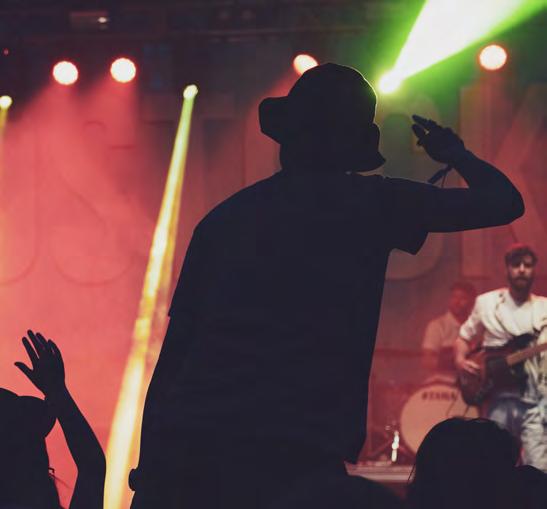
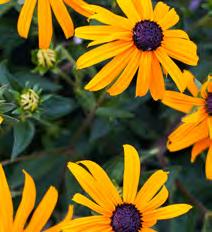
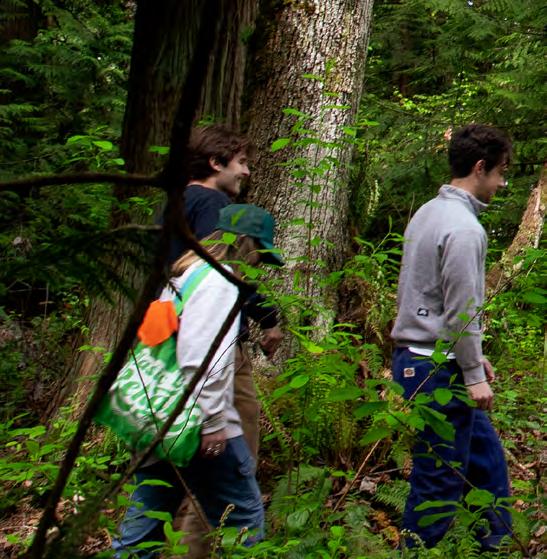






photos by parker wichelmann, jaidev vella and yosef kalinko SEATTLE UNIVERSITY MAGAZINE | FALL/WINTER 2022-23 5
Chapel of St. Ignatius Honored by American Institute of Architects

AIA bestows prestigious Twenty-five Year Award upon the chapel, praising its architectural design and timelessness.
The Chapel of St. Ignatius joins an illustrious list that includes Rockefeller Center, the Guggenheim Museum, the Vietnam Veterans Memorial and the Grand Louvre Paris as a newly crowned winner of the Twenty-five Year Award from the American Institute of Architects (AIA). The award is bestowed upon buildings that set a precedent and stand the test of time—and continue to set standards of excellence for architectural design and significance.
“I’m so pleased and proud that the AIA has honored the Chapel of St. Ignatius with its Twenty-five Year Award,” says Associate Professor and Chair of the Chapel Committee Jerry Cobb, S.J. “The Seattle University community has been abidingly grateful to (architect) Steven Holl and his team for imagining and fashioning such a remarkable sacred space in the heart of a secular city. The chapel has profoundly blessed our university and our city, drawing thousands of people to experience its luminous serenity.”
Scan to read more about the honor.
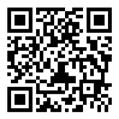

U.S.–Japan Relations Focus of Talk by Ambassador Koji Tomita

Seattle University hosted Koji Tomita, U.S. Ambassador of Japan, for remarks on “President Biden in Japan: The Future of Japan-U.S. Relations, the Quad and IndoPacific Cooperation.” Ambassador Tomita's visit was made possible by the Consulate of Japan in Seattle, in partnership with the Seattle Rotary Diplomacy Roundtable and the Consular Association of Washington.
In late spring, President Biden paid his first visit to Japan and the bilateral summit meeting with Prime Minister Fumio Kishida and the Quad leaders’ meeting with Australia and India showed a renewed focus on the Indo-Pacific. President Biden unveiled the Indo-Pacific Economic Framework (IPEF), which will bring together 12 countries in the region, alongside the U.S., in close cooperation on shared economic and trade issues. Ambassador Tomita discussed in detail the outcomes of this historic visit and what they mean for the future of the Indo-Pacific region.
out more stories like this
did you know
Check
at photos by yosef kalinko6 SEATTLE UNIVERSITY MAGAZINE | FALL/WINTER 2022-23
Law Professor is New McGoldrick Fellow
Robert Chang, executive director of the School of Law’s Fred T. Korematsu Center, is the recipient of the university’s most prestigious faculty honor.

School of Law Professor Robert Chang, an outstanding and nationally recognized teacher, scholar, lawyer and civil rights advocate, is the recipient of the 2022-23 James B. McGoldrick, S.J. Fellowship.
Named for Father McGoldrick, who died in 1983 after devoting 50 years of distinguished teaching and dedicated service to Seattle University, the fellowship is given to faculty who exemplify Fr. McGoldrick’s commitment to students and the values of the Jesuit educational tradition.
Professor Chang was the driving force behind the creation and the mission of the Fred T. Korematsu Center for Law and Equality. Under his leadership, the center has become a national model for bringing research, advocacy and education together to fight racial inequities in the legal system.
Perhaps most importantly, through his classroom teaching and the work of the center, Professor Chang has trained countless new lawyers in civil rights advocacy and litigation, instilling in them the value of pro bono work and a commitment to social justice.
Scan to read more about Professor Chang and the fellowship.
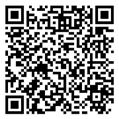
It’s a Zoo Out There

Seattle University’s Grounds Department is providing sustenance to animals at Woodland Park Zoo (WPZ).
The department is helping to keep bellies full at the zoo as its animals have recently been feasting on prunings from campus.
Recognizing the university’s pesticide-free and organic practices, “WPZ reached out to SU asking for branches from campus landscapes, trees and shrubs to add to their ‘browse’ for animals that rely on leaves, shoots and bark for their diet,” Grounds Manager Shannon Britton explains.
Britton and her colleagues were happy to oblige. “When we have a truckload, we e-mail our WPZ contact so they can pick it up the same day to ensure freshness.”
Seattle University is looking to continue this partnership year-round.
did you know SEATTLE UNIVERSITY MAGAZINE | FALL/WINTER 2022-23 7
The Art of Conversation
This year's Common Text is the memoir Know My Name. by allison nitch
The Common Text program welcomes students to the university’s Ignatian-inspired process of inquiry that emphasizes meaning-making, intellectual risk-taking and engaging in deep and critical discourse.
The Common Text for 2022-23 is Know My Name, a memoir by Chanel Miller.
Following a sexual assault on Stanford University’s campus, the nation came to know Miller when she shared her victim impact statement as “Emily Doe.”
“In Know My Name, Miller reclaims her identity as a writer, artist and cultural critic,” says Hilary Hawley, PhD, associate teaching professor in English, director of Core Learning and Engagement Programs and Common Text coordinator.
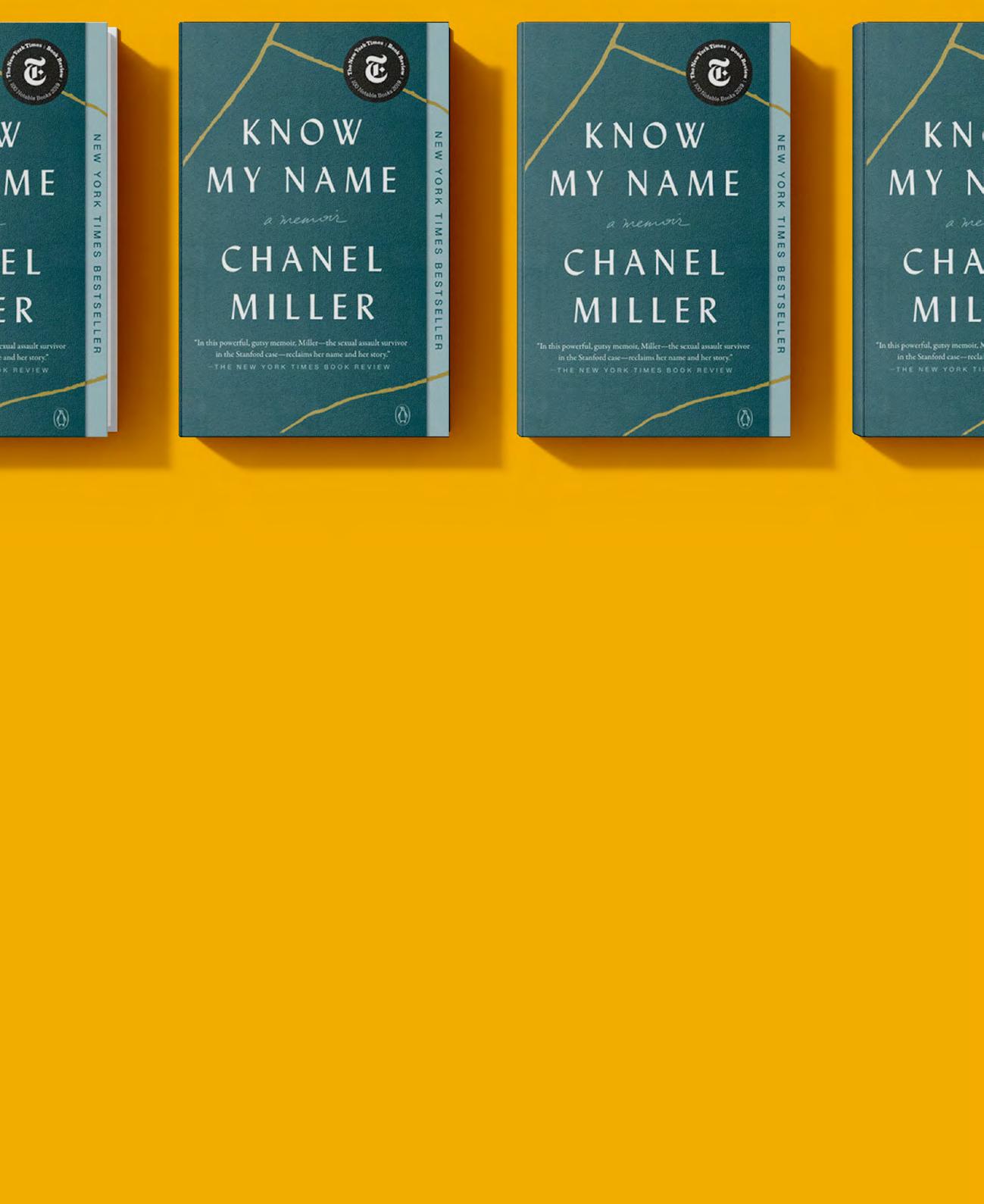
“She shares her story of trauma and healing and in the process, invites us not only to interrogate the structures that face victims of assault, but to step up and fight alongside her,” notes Hawley. “This is a necessary conversation, not only for Seattle University but for our national culture. We hope to foster conversations on consent and ways to
move from ‘bystander’ to ‘upstander.’”
All first-year and incoming transfer students received a copy of the book over the summer and engaged as a university community during Convocation in September. The issues raised by the text will be incorporated into select classes and pursued in a year-long series of programs built around specific themes.
The Common Text committee, led by Hawley and Stephanie Lewis, assistant director of the University Core, review works from a list of texts recommended by colleagues across campus and selections from publishers’ first-year experience catalogs. Committee members include SU faculty and college advisors who work with first-year students, as well as staff from key partners such as the Lemieux Library and the Office of Multicultural Affairs.
Several factors are considered in the selection process, including texts that are “accessible to entering undergraduate students and relevant to their lives and seek to represent diverse perspectives,” says Hawley.
The committee pursues texts with themes that connect to the SU mission and initiatives such as LIFT SU and the Strategic Directions and ideas that foster discourse across disciplines, courses and programs. Currency is also considered, says Hawley, “in terms of how its themes connect to questions that engage our cultural moment.”
The committee points out the message of resilience in Miller’s memoir: “‘It holds the tension of pain and hope, without making the focus on getting through trauma, but rather understanding what it takes to live through it and thrive.’ The issue of sexual violence is likely to resonate across our campus …,” says Hawley.
Hawley points out the author’s recounting of her experience preparing for trial can also inspire conversations in disciplines including nursing and the health sciences, women and gender studies, forensics and criminal justice, psychology and law.
on campus
8 SEATTLE UNIVERSITY MAGAZINE | FALL/WINTER 2022-23
Talking a Good Game
Through competitions, casual games, watch parties and career panels, gamers congregate and create community within Seattle University’s fastest growing club.
by allison nitch
Seattle University’s Esports Club was established just four years ago, yet it’s the largest student-led group on campus with nearly 800 students and alumni who meet both online and within a designated gaming room on campus, due to the club’s explosive growth.
Short for electronic sports, Esports is defined as a form of competition using video games. At SU, members have the option of participating in online and in-person tournaments or engaging with the club socially, where the “goal is just to have fun and build
a sense of community within the university,” says Alvaro Vazquez, ’22, business major and Esports Club president.
The club’s popularity is even more remarkable considering there was no Esports or other gaming club on campus until fall 2018, when the club was founded by students Leah Arakaki,’19, and Danielle Gilbert, ‘20. Vazquez joined his freshman year as a founding board member.
“I’m the only male who has ever led the club,” he says of his role as president. However, membership is male leaning, “which is true for the entire gaming industry as a whole,” he says. The club's board has always been 50/50 in terms of the gender dynamic.
“The goal for me—especially coming from our foundation—is how we can we break those norms?” Vazquez says. “How can we make this club as accessible as possible to everyone?”
As president, Vazquez is invested in furthering a legacy of equity and community.
One of the club’s objectives “is for students to be able to come into our club room, pick up a controller and make a new friend. I think that’s the magic of the club and what we continue to strive toward—making it as inclusive as possible for everyone involved.”

on campus SEATTLE UNIVERSITY MAGAZINE | FALL/WINTER 2022-23 9

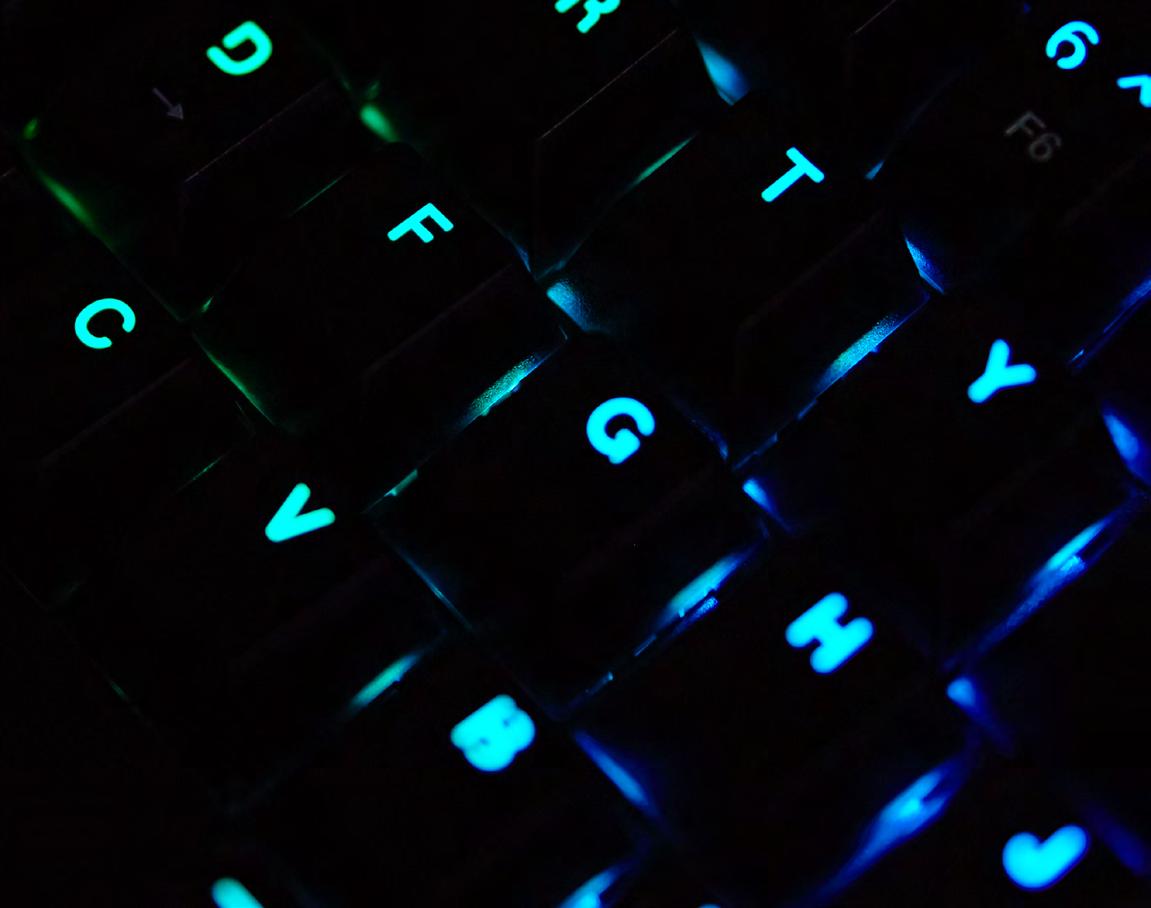
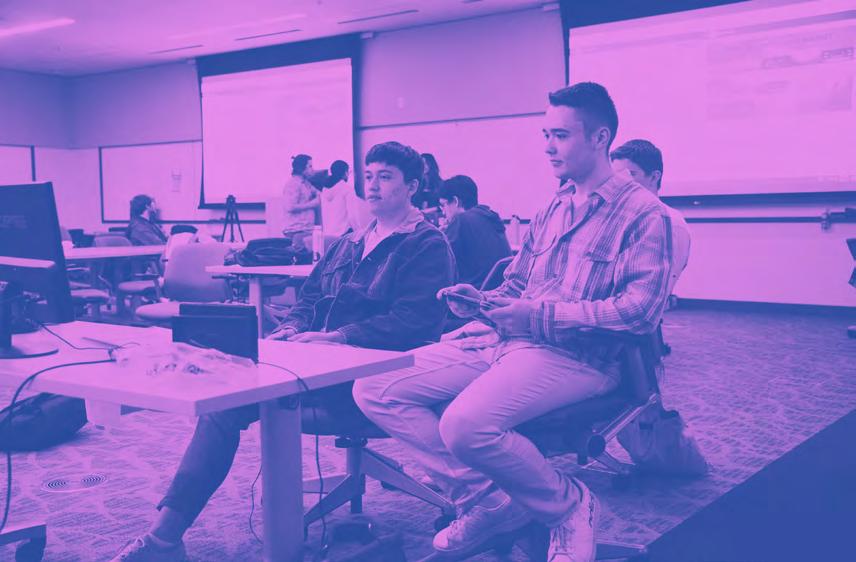
photos by nodoka kondo10 SEATTLE UNIVERSITY MAGAZINE | FALL/WINTER 2022-23
The club offers opportunities for students who don’t have access to gaming devices, either due to financial limitations or being from out-of-state/overseas and unable to bring equipment to campus. “We like to bring those experiences to people,” says Vazquez. “The most crucial part is connecting people who are like-minded in their interests … so they can create friendships and bonds. That’s a special thing we do—that’s the most important thing to me.”
Larger events can get up to 100 people in a room gaming with one another. There are also weekly and daily events, whether it’s dropping in for a quick game in between classes or before dinner or joining their designated teams online for a more sustained, competitive experience.
He recognizes the role SU’s location plays in the club’s popularity.
With gaming companies such as Nintendo, Amazon/Twitch, Microsoft/Xbox and Valve all headquartered in the region, along with PAX—one of the largest gaming conventions held in Seattle each year—Vazquez notes “there absolutely is a massive [gaming] presence here in the Seattle area, which is a pretty cool advantage. I think more so because our club has so much access to events that excite our members and draw people in. I guess you could say it has an indirect effect on our popularity.”
The Esports Club partnered with the Admissions Office in 2020 on a retention project to develop a system to bolster enrollment. Vazquez focused on community-building and in a matter of three days, 63,736 chat messages were exchanged within the special chatroom the club designed for admitted students.

Vazquez describes it as a great experience, one that concluded with 33 percent of admitted students committing to SU, “which was above the average for other programs … even more above the average of general admit students. Immediately it was like, ‘Okay, this works!’ That helped our club grow a lot as the year started and even as we entered 2021.”
As Vazquez prepares to pass the torch to the club’s next president, Jessica Lee ‘23, he’s been busy creating a new lounge
for club members to gather in the Student Center. Funding for the Esports room was secured and design was completed in collaboration with Cardinal Architecture and is set to open this fall.
“This was also part of my capstone project at SU,” he says. “… It’s been really cool to be in all the design meetings … and have the opportunity to be involved from so many different angles over the past few years.”
He’s also focused on securing funding to fortify enough equipment inventory to ensure the club’s continued success.
“I think we’ll have our best years going forward. This year was about getting the ship back into the water now that we’re finally back in-person.”
The club’s structure extends leadership opportunities for students, including serving as vice presidents, chair members, community managers, hardware assistants, a competitive officer, team captains and managers.
While Vazquez looks forward to a career in business finance, he recognizes how the many responsibilities he’s had as president all contribute to his professional development, from consulting, budgeting and networking to project management and coordinating with companies and individuals for career panels. “The skills I gained from being in this club, being an officer and a leader, will be very useful for me,” he says.
Another aspect of his capstone involved the creation of an organized alumni channel on the club’s server allowing for continuous communication with Esports alum. “Not just for future potential alumni programming, but also for connections.”
For example, several alumni share postings about internships where they work, including club co-founder Arakaki. Adds Vazquez, “There are so many companies focusing on gaming and we have so many members who are computer science majors, so it’s very convenient. I want that to happen more. That’s the business side of me.”
Club members, including Alvaro Vazquez (center, front row), during a recent gaming meetup on campus.

100+ club insider
Most
popular game: League of Legends Alvaro’s favorite game: Paper Mario: The Thousand‑Year Door ACTIVE ALUMNI
SEATTLE UNIVERSITY MAGAZINE | FALL/WINTER 2022-23 11
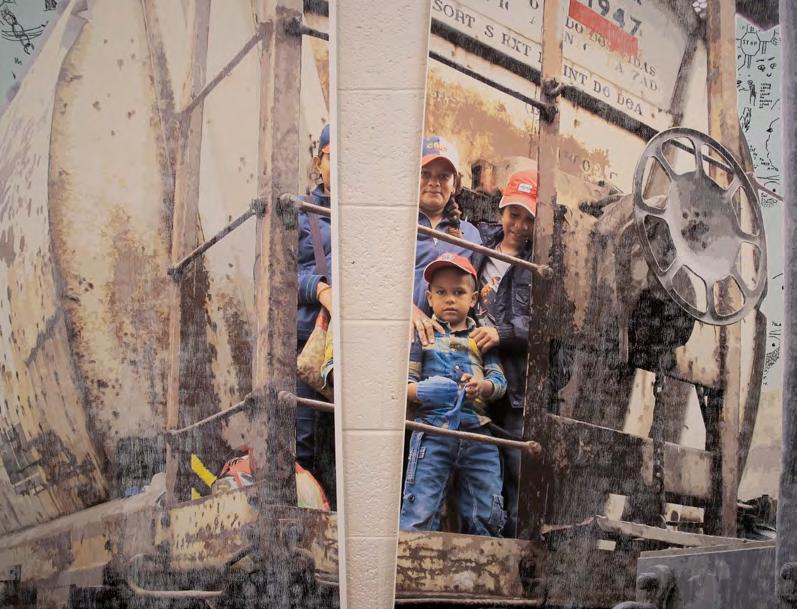


FEATURE
“Dos Vidas” by artists Arturo Araujo, S.J., and Ariadne Alexandria Campanella
“A Shared Thirst” by artists Arturo Araujo, S.J., and Henry Geary, ’22
"Creation" by artists Arturo Araujo, S.J., and Chloe Rollens, ’23
12 SEATTLE UNIVERSITY MAGAZINE | FALL/WINTER 2022-23
A R T T H A T
Anevocative and visually striking image of a trio of Syrian boys, in play at a refugee camp in Lebanon, with swaths of light bathing their movement and soft golden halos floating ethereally above their heads. A family gathered awaiting a train at a station in Ukraine, with a mother holding tightly a child, its serene, cherubic face piercing the gaze of observers. A teacher, standing tall and regal, representing the important work of educators—of which there is a shortage of in refugee camps around the world.
These are just a few of the stories encapsulated in an art installation conceptualized and created by Arturo Araujo, S.J., and Seattle University art students that uses photography, wood printing and paint to bring to life themes that represent the Universal Apostolic Preferences (UAPs). The installation, called “Heaven’s Heart,” consists of 10 pieces, four of which are diptychs—each on paper—that are 10 feet tall. The pieces were commissioned from Father General Arturo Sosa, who personally reached out to Father Araujo, an acclaimed artist and associate professor of visual arts.
It started with an email, out of the blue, says Fr. Araujo, requesting art that would fill a space—specifically, a 134-foot-long
T R A N S C E N D S
by tina potterf
corridor in the Jesuit General Curia in Rome—that was previously occupied with portraits of former Father Generals of the Society but has been void of art for more than a decade. “The request was to bring living art to these walls,” says Fr. Araujo.
In preparation to take on this commission—his second largest ever—Fr. Araujo traveled to Rome and spent two weeks immersed in the space that the art would occupy, walking the grounds and ruminating on how to capture in art the UAPs’ principles in a exhibition that would live here for years to come. The UAPs consist of four guiding tenets: Showing the way to God through Spiritual Exercises and discernment; walk with the poor, the outcasts of the world, those whose dignity has been violated, in a mission of reconciliation and justice; accompany young people in the creation of a hopefilled future; and collaborate, with Gospel depth, for the protection and renewal of God’s creation.
“I am humbly proud to provide images
for the four UAPs. These have the power to articulate the entire apostolate of the Society of Jesus in the world,” says Fr. Araujo. In conceptualizing the project, he worked from some set objectives that included a mix of traditional and digital media and printmaking methods; impactful without being flashy; using real people instead of models; and featuring images that convey hope and humanity.
As explained by Father General Sosa in a talk in 2019, the Universal Apostolic Preferences “give a horizon, a point of reference to the whole Society of Jesus. They capture our imaginations and awaken our desires. They unite us in our mission. With these UAPs, we resolve to concentrate and concretize our vital apostolic energies during the next 10 years. We accept them as a mission of the Church through Pope Francis, who has approved them by confirming the communal discernment that was undertaken by the apostolic body.”
The exhibit, which made its public debut in late June and was formerly installed in its permanent home in July, was constructed over many weeks with the support of five students from the art and design programs. They were on board from concept to completion and traveled to Rome to be part of the install. Each
Artist and educator Arturo Araujo, S.J., and students collaborate on art installation that is lining venerated walls in Rome.
SEATTLE UNIVERSITY MAGAZINE | FALL/WINTER 2022-23 13
piece has a spiritual or religious undertone but at the center is photography that speaks to the human condition. For the images, Fr. Araujo turned to Jesuit Refugee Service, which made available their bank of photography shot throughout the world. He pored through hundreds of images to find the small batch to use in the art pieces, with each photo capturing a moment in time and enhanced through vibrant painterly touches and screen printed text and illustrations that add another layer of dimension.

For Fr. Araujo, once the pieces were completed, he described the feeling in one word: “relief.”
He jokes, “As an artist, this installation is either the beginning of my international career—or the end of it.”
Chloe Rollens, ’23, a double major in Visual Arts and Art History, says working on the project was enlightening, expanding her perspective on religion and religious iconography. And to be part of a project like this “has opened my eyes to new possibilities.”
“The most meaningful aspect about this entire process has been how intimate of a relationship these prints have with religion. The emphasis on the Universal Apostolic Preferences, and the Society of Jesus as a whole, has been extremely prevalent from the first meetings to the installation in Rome,” she says. “Although I am from a non-religious background, I have learned to understand the impact that religion has on certain populations— more specifically, what religion has to offer, including community, ethical principles and experiences.”
For design graduate Pia Jondonovan, ’22, being part of this project was made all the more valuable because of the ability to make art with her mentor, “especially one as talented and thoughtful as Arturo.”
“Arturo guided me the whole way, from working together to conceptualize the piece to editing on Photoshop to the digital print and the wood print stages and the final touches of paint. He gave instruction, advice and help when needed, while still allowing us creative freedom.”
Jondonovan has never been involved on creating art at this scale but doing so helped affirm her work and worth as an artist.
The students selected by Fr. Araujo to collaborate on this mammoth project provided not only their talent as artists but also a fresh take and approach to tackling a profound and important subject matter.
“Working with students in this project completed my call to be an educator able to open possibilities for my students and expand the classroom into professional territory,” he says. “I feel nourished and revitalized by the students’ contributions to this art project.”
“It’s honestly pretty surreal. I don’t think it has fully sunk in that my work will be displayed in Rome,” she says. “As someone who makes art, I’ve spent a lot of my life preparing myself to not be a successful artist because it always seemed so out of reach. To have Arturo recruit me specifically and offer me this opportunity gave me so much validation as an artist and helped me realize that I can actually be successful.”
The impact of this art installation will endure, having the power to reach beyond its sheer beauty and breadth to connect with visitors on a much deeper level.
“Art is not just decoration,” says Fr. Araujo. “Art can articulate human desire within and beyond ideologies.”
“Art is not just decoration. Art can articulate human desire within and beyond ideologies.”
—Arturo Araujo, S.J.
“The Way to Joy” by artists Arturo Araujo, S.J., and Pia Jondonovan, ’
22 photos by yosef kalinko and arturo araujo, s.j.14 SEATTLE UNIVERSITY MAGAZINE | FALL/WINTER 2022-23
Inset: Student artists (l r) Pia Jondonovan, ’22, Bridgette Huhtala, ’22, and Henry Geary,’22, with Fr. Araujo during the installation in Rome. They are standing in front of “Creation,” featuring Syrian refugees.



“Dos Creador” by artists Arturo Araujo, S.J., and Bridgette Huhtala, ’22
Jesuit artist, educator and arts innovator Arturo Araujo, S.J.
SEATTLE UNIVERSITY MAGAZINE | FALL/WINTER 2022-23 15
SPEAKING FROM EXPERIENCE
by allison nitch

faculty spotlight
photo
by yosef kalinko16 SEATTLE UNIVERSITY MAGAZINE | FALL/WINTER 2022-23
Assistant Professor Paige Gardner, '11 MEd, PhD, incoming co-director of the Student Development Administration program, offers students a unique perspective as a scholar-practitioner.
part of Dr. Paige Gardner’s story includes the role women of color have played in her advancement through the field of Student Development.
Alarge
The path that led her to Seattle University—first as a graduate student and now as an assistant professor and co-director of the Student Development Administration program—began with mentorship at her undergraduate alma mater where she was introduced to student affairs and higher education as a profession.
“That was exciting for me because I never considered pursuing a master’s degree,” says Gardner, '11 MEd, PhD.
Her undergrad mentor recommended SU’s Student Development program and Dr. Bridget Kelly, a professor in the department at the time. “After meeting Dr. Kelly and learning about what she does, I knew there was a natural connection to this program.”
While Dr. Kelly relocated to Loyola University Chicago before Gardner enrolled in SU, she did end up working with Kelly later while earning her PhD at Loyola and then as the university’s Assistant Dean of Students.
In 2021, Gardner returned to SU as an adjunct professor tasked with designing and instructing the Diversity and Inclusion in Higher Education course. And just as she was falling in love with teaching in the classroom, her current scholar-practitioner role became available.
“I believe in God and I think this was ordained,” says Gardner. “The alignment happened. I taught the class and made some great relationships with students in the program, which is now becoming a staple course.”
beyond the margins
As a queer, Black feminist scholar, Gardner continues to radically imagine the success of those on the margins of society. “Along with being a woman of color, my queerness is a huge part of who I am as well,” she says.
Much of her research centers on
the experiences of women of color professionals who are navigating historically white institutions “and what are the systems of support that we develop for ourselves,” she says.
“It’s also about creating research that affirms our marginalized experiences so we don’t feel alone, that we feel empowered and disrupt gaslight culture in the workplace. There are instances where we’re told ‘this is an inclusive space,’ that we aren’t experiencing intersectional oppression or that our research is not rigorous enough. Luckily, I think we are moving in a direction where folks are becoming more aware about the marginalized experience and more intentional about creating space for more avenues for research to be done and seen as legitimate.”
Gardner sees a “powerful narrative in terms of the way we lift and climb that’s very specific to women of color who hold intersecting, marginalized identities when we are looking at race and gender together.”
That doesn’t mean everyone does it the same way or that every woman of color’s agenda is to lift and climb, she notes. “… I am specifically looking at how folks with intersecting marginalized identities survive and thrive in work environments that were not designed for them to do as such.”
Gardner has also dedicated an emphasis around Black feminist action research.
“I get the opportunity to partner with women of color and shift the hierarchical relationship between the researcher and the participant and turn it into this co-creation experience, where my participants become co-researchers.”
innovative approach
The Student Development Administration program reports more than 60 percent of its enrollment consists of students of color and six out of 10 students are firstgeneration in college.
The fact that her research centers on
students’ lived experiences means they leave “feeling empowered in who they are by knowing what they are bringing,” explains Gardner. “It’s been such an important moment to come into this work right now because our students need that time for affirmation.”
While a grad student, Gardner worked as an Assistant Resident Director in the Xavier and Chardin/Murphy Apartments.
“It was truly a joy coming from an undergrad experience where I was seeking out support from a mentor. When I was in the assistant director role, I understood what it meant to be in the mentor role and how serious it is—our modeling for students, day in and day out."
That experience shaped her practice.
Some of the skills she brings to the classroom involves advising graduate students with the added element of professional coaching. Her practitioner skills bring a level of innovation—think unique guest speakers, assignments like podcast recordings and infusing elements of technology, such as Padlet, into her lessons.
care for the whole person
Gardner says the Jesuit hallmark of cura personalis transformed her journey on multiple levels. “… I’ve come to redefine the meaning of cura personalis and it’s really about caring for myself so that I can then care for others”—an understanding that developed during her 12 years of professional experiences.
“From what we see on TV to what we’re personally experiencing, we’re all carrying a lot. I think cura personalis must extend into the self so you can pour from a full cup as opposed to pouring from an empty one.”
Faculty & Staff: Have a recent paper or book published? Speaking at a conference? Send your professional achievements for consideration in future communications or marketing opportunities to tinap@seattleu.edu.
SEATTLE UNIVERSITY MAGAZINE | FALL/WINTER 2022-23 17
Leadership Ushers in New Era at Seattle University

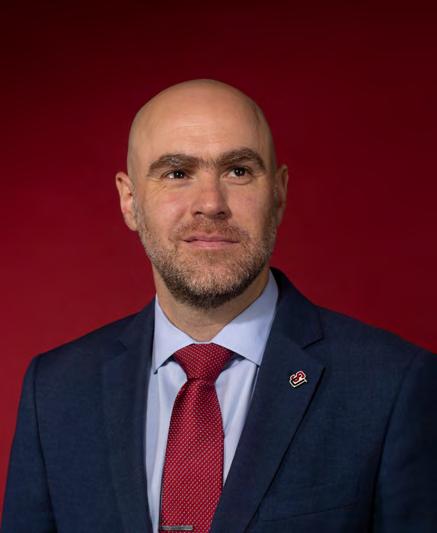



New deans and vice presidents exemplify and elevate the university’s commitment to inclusive excellence.
 by allison nitch and tina potterf
photos by yosef kalinko
by allison nitch and tina potterf
photos by yosef kalinko
18 SEATTLE UNIVERSITY MAGAZINE | FALL/WINTER 2022-23
Cynthia Amit Anthony Edgar Catherine & Jerron
They are dynamic leaders and scholars, helping to shape minds while being instrumental in shaping the future of Seattle University. New deans in the College of Education, the College of Science and Engineering and the School of Law—along with the selection of new vice presidents in University Advancement, Mission Integration and Human Resources—are reflective of the university community as a whole. Each illustrate the important institutional values of diversity and inclusivity that are intrinsic to our mission and the fabric of what makes SU distinctive—from our students, faculty and
staff to our alumni and the administration, says President Eduardo Peñalver.
“We have a remarkably diverse group of deans and vice presidents who are going to help us lead from the top as we move forward into the future of Seattle University and the implementation of LIFT SU and the Reignited Strategic Directions.”
For students and colleagues alike, having diverse representation in leadership is important not only because it expands opportunities for more voices to be heard but also for building community and belonging.
College of Education Dean Cynthia Dillard, PhD, says that “Diversifying the
upper levels of institutional leadership becomes a model for the institutional change we desire at all levels of the organization.”
This also extends to the College of Science & Engineering as Dean Amit Shukla, PhD, notes that “inclusive excellence is a strategic advantage in STEM. All the new hires at the administrative level bring their unique perspective and experience to build on the rich history of SU.”
And, adds School of Law Dean Anthony Eudelio Varona, JD, LLM, “Our diversity really is our strength and we must nurture and grow it.”
FEATURE SEATTLE UNIVERSITY MAGAZINE | FALL/WINTER 2022-23 19
the deans
Amit Shukla, PhD College of Science and Engineering
As a former Miami University, Ohio, academic and administrative leader, Amit Shukla, PhD, brings a commitment to innovation, transparency, collaboration and inclusion into his role as Dean of the College of Science and Engineering.
Says Dr. Shukla, “… In partnership with industry and local community, the College of Science and Engineering (CSE) can be a national role model for educating a diverse student body to become ethical leaders.”
Cynthia Dillard, PhD College of Education
Cynthia B. Dillard, PhD, began her role as Dean of Seattle University’s College of Education (COE) in early 2022. “One of the most exciting parts of being a new dean here is the changing landscape and face of institutional leadership,” she says.
A distinguished scholar, Dr. Dillard’s research includes intersections of race, culture, gender and spirituality, particularly in the context of teaching and education.
She has authored or edited four books, with the most recent being, The Spirit of Our Work: Black Women Teachers (Re) member. In addition, Dillard has written a multitude of articles, book chapters and other scholarly pieces, while frequently presenting as a keynote speaker and panelist at national conferences.
Anthony Eudelio Varona, JD, LLM School of Law
Born in Cuba and raised in Newark, New Jersey, Anthony Eudelio Varona, JD, LLM, is the first in his family to graduate from college, having earned undergraduate and law degrees from Boston College and an LLM (Master of Laws) from Georgetown University Law Center.
Seattle University’s leadership and Jesuit and Catholic identity and traditions drew Varona to the School of Law.
“I am Jesuit educated and experienced firsthand how Ignatian pedagogy and especially cura personalis—our commitment to educating the whole student in service to the world—not only formed me as a person, but also informed my work as a lawyer, civil rights activist and ultimately, as a law professor.”
20 SEATTLE UNIVERSITY MAGAZINE | FALL/WINTER 2022-23
Describe your priorities in your first months in this role.
“The CSE community has exceptional faculty and staff who are truly focused on student success. My priorities include empowering the work of all our CSE faculty and staff in support of students. This requires me to listen, appreciate, learn and celebrate the tremendous work being done in the CSE community. Additionally, we will begin building a collaborative environment to solve interdisciplinary problems in STEM with a focus on inclusive excellence.”
What is your vision as a leader and how does this vision align with our Reignited Strategic Directions?
“I am looking forward to collaborating with the SU and CSE communities to develop a model for transformative and multidisciplinary STEM education. SU is an ideal place to create an innovative and creative STEM education and research paradigm supported by local industry partners.
“STEM education needs to transform itself from discipline-based to a problem-based enterprise, which is interdisciplinary and creative while responding to the future of work. Reignited Strategic Directions includes a framework for advancing our mission including that of inclusive excellence, reimagining curricular and extracurricular approaches for student success, and positions the university for growth. CSE will have an active role to play in all those areas.”
Q&A
What does it mean to be part of a wave of new hires at the administrative level that reflect the diversity and inclusivity integral to Goal 4 of the Strategic Directions and the diversity the university strives for across the board?
“I am honored to be joining SU at this time of change and renewal under the leadership of President Peñalver and Provost Martin. Inclusive excellence is a strategic advantage in STEM. All the new hires at the administrative level bring their unique perspective and experience to build on the rich history of SU.”
Parting Thoughts
What is the last book you read and enjoyed?
“Human Work by Jamie Merisotis, for its unique perspective on how we can prosper by serving others with empathy in the age of smart machines.”

What is the last TV show you binged?
“I am a Star Wars fan and binged The Book of Boba Fett.”
Amit Shukla, PhD Dean, College of Science and Engineering

What is your favorite part of living in the Seattle area/Pacific Northwest?
“I am looking to explore the coffee culture in Seattle and we, as a family, are looking forward to exploring the natural beauty of the Pacific Northwest, while making new friends in the community.”
What’s your favorite spot in Seattle?
“My favorite spot is actually on campus—the Chapel of St. Ignatius and its reflecting pool.”
SEATTLE UNIVERSITY MAGAZINE | FALL/WINTER 2022-23 21
Cynthia Dillard, PhD Dean, College of Education

Describe your priorities in your first months in this role.
“My first priority is to listen and learn the history of this institution, including that of the COE, and to better understand where we have been in order to understand where we need to go. In line with the vision outlined below, we will engage a strategic planning process to collectively create our path forward as a college.
“Second, build bridges between our city, our nation, our world and SU’s COE to share the amazing work that the college has done and continues to do.
“Third, we are engaging in several academic program revisions and curriculum development, including in our Educational Doctoral program. This thoughtful planning will result in one of the most innovative, culturally responsive, forward-looking educational leadership doctoral programs in the nation, one that centers educational justice and leadership in the traditions of Jesuit education.”
What is your vision as a leader and how does this vision align with our Reignited Strategic Directions?
“My vision to (re)ignite the COE is a vision that fully rests in our larger strategic directions. Like the SU Strategic Directions, (Re)igniting Education serves as the foundation for our upcoming strategic planning process in the COE, beginning this fall. My vision for this college has five goals:
• To engage even more deeply in the local and global work of increasing
access and opportunity across the fields of education for those most marginalized by history and contemporary circumstances.
• To expose and engage our students, staff and faculty in the critical discernment and cultivation of creative genius that is necessary in a time of change in education and in line with our mission of a progressive and innovative education.
• To build an increasingly diverse and talented faculty, staff and student body who are able and desire to support one another.
• To (re)ignite the spirit of our work by creating effective and clear organizational structures, procedures and communication that allow us to address our vision.

• To increase COE’s financial position to meet this vision through robust fundand friend-raising, increased grants and foundation support.”
What does it mean to be part of a wave of new hires that reflect the diversity and inclusivity integral to Goal 4 of the Strategic Directions and the diversity the university strives for across the board?
“Diversifying the upper levels of institutional leadership then becomes a model for the institutional change we desire at all levels of the organization. As a scholar of equity and diversity, what I am seeing—and what I am now a part of as Dean of COE—is a rare but powerful example of what is to come.”
Parting Thoughts
What is the last book you read and enjoyed?
“Last November, I published my fourth book, The Spirit of Our Work: Black Women Teachers (Re)member. And I recently 'read' my book on Audible. It’s a real gift to hear the words that you have written come to life in the voice of the beautiful woman who was the reader of my book.”
What is the last TV show you binged?
“Truth Be Told, starring Octavia Spencer as an investigative journalist. Sharing her narratives through a podcast, she asks us to reconsider the facts of major cases, including our interpretations of the stories we have been told. Such a great metaphor for what we do in education!”
What is your favorite part of living in the Seattle area/Pacific Northwest?
“(Re)membering the beauty of the Pacific Northwest and all the places I love: The Cascades. Vancouver (both Canada and Washington, where I student-taught all those years ago). Being close to my alma mater, Washington State University. Lake Washington and Lake Union. And of course, being able to take in all the beauty of Seattle University is a gift, especially the labyrinth outside Loyola Hall. It is not only breathtaking—it’s life giving.”
What’s your favorite spot in Seattle?
“My mother’s kitchen table.”
Q&A
22 SEATTLE UNIVERSITY MAGAZINE | FALL/WINTER 2022-23
Q&A

aspirations for our law school. At the same time, I will be starting to implement our collective vision for SU Law, hitting the ground running to ensure that we achieve key benchmarks by the end of my first year and that, together, we begin to take the law school to unprecedented heights of achievement.”
What is your vision as a leader and how does this vision align with our Reignited Strategic Directions?
Parting Thoughts
What is the last book you read and enjoyed?
Anthony Eudelio Varona, JD, LLM Dean, School of Law
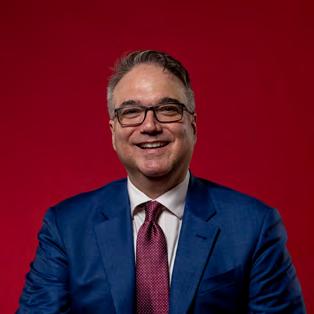
“My vision for the law school resonates perfectly with the university’s exciting new strategic vision. We must strengthen our curriculum to ensure that it serves our students best, leverages our location in and connections throughout the global tech and innovation hub that is Seattle and prepares them to pass the bar on the first try. We must ensure that we graduate ‘practice ready’ attorneys who enter attractive positions in law practices or closely allied fields that will enable them to have a positive impact on the world. We will promote and add to our extraordinary faculty and showcase their achievements and expertise. SU Law will become more of a nationally prominent convening institution, hosting leaders from practice and the academy, the bench and government, for cutting-edge conferences and symposia, distinguished lectures and other prominent events. We will deepen our commitment to social justice, excellence and innovation and will reinforce the commitment to diversity and access that are part of our DNA. We also will better engage and spotlight our extraordinary alumni in the life and future of our law school.”
What does it mean to be part of a wave of new hires at the administrative level that reflect the diversity and inclusivity integral to Goal 4 of the Strategic Directions and the diversity the university strives for across the board?
“I tend to read several new books at once, fiction and nonfiction, but sometimes I like to go back and reread books. Recently, I did this with one of the masterworks of two SU School of Law faculty luminaries: Professors Richard Delgado and Jean Stefancic and their book, Critical Race Theory: An Introduction—a book that helped to frame and define the Critical Race Theory (CRT) movement and that has become one of its foundational texts.”
What is the last TV show you binged?
“What I have been binging lately, as a new Seattleite, are many YouTube documentaries on Seattle's origins and history, its rich Native American roots, its many waves of immigration from all corners of the planet, its unique topographical attributes and all the other qualities that make it the best place to study law and to live in the United States.”
What is your favorite part of living in the Seattle area/Pacific Northwest?
“My husband and I love Seattle and the Pacific Northwest so much that we used to vacation here annually from the East Coast. What’s not to love? There’s the confluence of so many cultures and cuisines, beautiful architecture and streetscapes, perfect summers, the buzz of innovation and creativity, so many opportunities to enjoy nature, crisp, clean air, lush vegetation and treescapes and Elliott Bay Book Company here in Seattle and Powell’s in Portland. As a native-born Cuban, who was fed strong espresso while still a toddler, Seattle coffee culture is home (and fuel) for me. It’s no accident that my open meetings with students are called ‘Cafecitos with Dean Varona.’”
What's your favorite spot in Seattle?
Describe your priorities in your first months in this role.
“I am immersing myself in our law school and university community, meeting with as many students, faculty and staff colleagues and alumni as I can to gather advice and ideas and discuss everyone’s hopes and
“I am honored to serve as SU Law’s first dean who is Latinx, an immigrant and an openly gay man. Those and other experiences help me to identify with so many of our students who themselves overcame obstacles to join our community. I see every day how the rich diversity of our community elevates and enriches our teaching and intellectual life. Our diversity really is our strength and we must nurture and grow it.”
“In our new house, we are fortunate to have a roof deck that overlooks the Seattle University campus and the glorious downtown skyline. It’s a beautiful view, especially at sunset, that reminds me daily of how fortunate we are as a university and law school to be in the heart of such an exciting world capital of innovation, culture, law and opportunities for public service and social change.”
SEATTLE UNIVERSITY MAGAZINE | FALL/WINTER 2022-23 23
the vice presidents
Edgar Gonzalez University Advancement
“The ultimate team sport” is how Edgar Gonzalez describes working in higher education. Central to the team are the people and relationships that are forged and valued, working together toward a shared goal of advancing the SU experience today and beyond.
“Our vision is to build a strong team and sustainable systems to meaningfully engage and inspire our students, alumni, donors, friends, parents and the Seattle community in service of SU’s priorities.”
Gonzalez comes to the university from the Oregon Health and Science University (OHSU) Foundation in Portland, where he was Assistant Vice President for Development.
Catherine Punsalan-Manlimos, PhD
Mission Integration
Catherine Punsalan-Manlimos, PhD, returns to Seattle University after serving as Assistant to the President for Mission Integration at University of Detroit Mercy in Michigan. In this newly created position at SU she will facilitate and coordinate the many mission-related activities across the university, including a re-constituted Mission Council.

“It is exciting to be part of a team that promises to bring diverse expertise and lived experience to the table. I am eager to be in spaces of dialogue and communal discernment with this group. I am especially excited because the university’s commitment to diversity and inclusivity is understood as an important expression of mission.”
Jerron Lowe, JD
Human Resources & Chief Human Resources Officer
Jerron Lowe, JD, brings a wealth of experience in both higher education and the private sector to his role leading Human Resources at Seattle University.

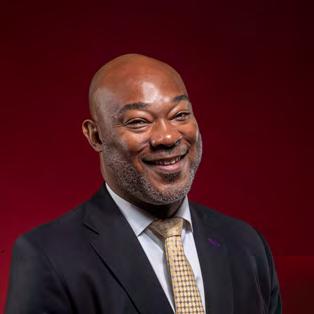
Lowe comes to SU from the University of Denver, where he was instrumental in strengthening HR programs and aligning them with that institution’s mission, goals and strategic priorities. Among other contributions, he led an initiative to expand access to a higher quality of health care for employees, while implementing a diversity, equity and inclusion training program.
Lowe says he is honored to join the SU community. “This is an exciting time to serve Seattle University students, staff, faculty and administrators … as we aim to be one of the most innovative and progressive Jesuit and Catholic universities in the world. I look forward to contributing toward the strategy and achieving the overall vision, while making SU a best place to work.”
24 SEATTLE UNIVERSITY MAGAZINE | FALL/WINTER 2022-23
Catherine Punsalan-Manlimos, PhD, Vice President, Mission Integration
Describe your priorities in your first months in this role.
“I think what is most important is to reacquaint myself with the university community and understand the landscape from the lens of my area of responsibility as Chief Mission Officer. Relationships helped me to be successful in my previous roles at SU. I have been away for almost four years. Reestablishing those relationships and building new ones with new community members are top priorities as they will inform much of my work.”
What is your vision as a leader and how does this vision align with our Reignited Strategic Directions?
“My vision for Mission Integration is that it’s the recognized resource for deepening understanding, commitment and integration of SU’s Jesuit and Catholic educational mission into all facets of the university. SU’s Reignited Strategic Directions are intended to be built upon the foundation of mission. Mission is expressed throughout the various goals. The Office of Mission Integration has a critical role to play in the creation of a culture that prepares students, faculty and staff to understand and discern what this means for them and their roles at the institution.”
What does it mean to be part of a wave of new hires at the administrative level that reflect the diversity and inclusivity integral to Goal 4 of the Strategic Directions and the diversity the university strives for across the board?
“It is exciting to be part of a team that promises to bring diverse expertise and lived experience to the table. I am eager to be in spaces of dialogue and communal discernment with this group. I am especially excited because the university’s commitment to diversity and inclusivity is understood as an important expression of mission.”
Parting Thoughts
What is the last book you read and enjoyed?
“Last month, I revisited Dean Brackley’s Discernment in Trouble Times and really appreciated being reminded of his approach to the [Ignatian] Spiritual Exercises, informed by his experience in El Salvador.”
What is the last TV show you binged?
“Season two of Bridgerton. One I followed closely to completion was Moon Knight. My son and I bond over watching things from Marvel Universe, even if we’ve had to do it over a distance the last three years.”
What is your favorite part of living in the Seattle area/Pacific Northwest?
“Besides being close to family and the wonderful variety of great Asian restaurants? The beauty of the Pacific Northwest is a constant invitation to attend to the sacred.”
What’s your favorite spot in Seattle?
“That is a difficult question both because there are so many places and many of them I know from memories from years ago. At the same time, I live outside of the city and so some of my favorite spots are in Renton, like Coulon Beach Park. Having been away for a while, I find myself imagining the upper mall on the SU campus, especially during spring and fall when things are either in bloom or changing colors.”
Edgar Gonzalez, Vice President, University Advancement
Describe your priorities in your first months in this role.
“My priority in the first six months is to learn. I need to learn the place, the people, and the University Advancement team. And I intend to do a ton of listening to learn where UA can have the most impact across campus. I intend to put on my hard hat and build as many bridges and tunnels as possible to connect UA to all areas of campus and the community.”
What is your vision as a leader and how does this vision align with our Reignited Strategic Directions?
“Our vision is to build a strong team and sustainable systems to meaningfully engage and inspire our students, alumni, donors, friends, parents and the Seattle community in service of SU’s priorities.”
What does it mean to be part of a wave of new hires at the administrative level that reflect the diversity and inclusivity integral to Goal 4 of the Strategic Directions and the diversity the university strives for across the board?
“I’m humbled and honored to join this group of new hires and all the wonderful leaders that have been working for years across campus. As I said above, this is a special moment at SU and the diverse perspectives and lived experiences of the leaders are vital to ensuring we are looking at the future through the right lens. We will learn from one another and lead from a place of inclusivity and belonging. That’s truly exciting.”
Parting Thoughts
What is the last book you read and enjoyed?
“I just finished reading The Wounded Healer by Henri Nouwen. It speaks simply, yet directly and profoundly, about ministry and serving our community.”
What is the last TV show you binged?
“I last binged Ted Lasso.”
What is your favorite part of living in the Seattle area/Pacific Northwest?
“My favorite part is getting to move back to the Seattle area. Being from Buenos Aires, Argentina, I always loved the green space, the proximity to nature and Dick’s Drive-In.”
What’s your favorite spot in Seattle?
“One of my favorite spots in Seattle is Matthews Beach Park. We raised our three girls near there and made many fond family memories. I also love driving south across the Ship Canal Bridge on a clear, sunny day. That view never gets old.”
Q&A SEATTLE UNIVERSITY MAGAZINE | FALL/WINTER 2022-23 25
Q&A
Jerron Lowe, JD, Vice President, Human Resources & Chief Human Resources Officer
Describe your priorities in your first months in this role.
“Listen, assess and review. With the assistance of my amazing Human Resources team and the search committee that brought me to Seattle University, we structured an onboarding plan that has provided me the opportunity to listen and learn about opportunities and challenges, partnerships and gaps, in addition to past practices and future aspirations. My first 90 days are dedicated to meeting with all deans, vice presidents and select administrative units to gather feedback about Human Resources’ performance, specifically around service delivery and strategic alignment. Based on the information gathered, I will begin to develop a customer service index and provide intel on challenges and the extent of the challenge as it relates to people, processes, structure and/or systems and technology.
“In addition to connecting with leadership during these initial three months, engagement with Staff Council and Faculty Assembly is a top priority to also assess Human Resources’ performance, understanding expectations, pain points and opportunities to enhance collaboration. While listening to the voices of the community, I also must look internally within my unit and design a strategy that will, in the immediate, build capacity and create efficiencies. Lastly, my top priority is to have fun. Have fun learning, have fun listening and have fun leading.”
What is your vision as a leader and how does this vision align with our Reignited Strategic Directions?
“I mentioned Goal #2 of the Reignited
Strategic Directions and how this strategy impacts the SU culture. Culture is what builds commitment to institutions and to achieve affective culture, the acceptance of the institution’s values and identification with those values, we must create work environments that are meaningful and rewarding to our faculty and staff. My vision is to build plans, programs and processes for the workforce that is hardwired into daily life. … My vision will focus on four strategic areas that will align with the initiatives of Goal #2:
• Work design to promote meaningful work, line of sight, efficiencies and work processes that enhance workforce engagement.
• HR processes to support talent acquisition, talent reviews, talent retention and workforce planning.
• Growing the next generation of talent through succession planning.
• Leadership development to empower individuals to navigate through each strategy.
“Each focus area will demand a lens toward inclusive excellence, aligning with Goal #4. This type of culture work—with a commitment to justice, diversity, equity and inclusion—will support our efforts toward recruitment, engagement and retaining a diverse talented community of staff and faculty. My vision is for Seattle University to be recognized as a ‘Best College to Work For’ and an overall ‘Best Place to Work.’”
What does it mean to be part of a wave of new hires at the administrative level that reflect the diversity and inclusivity integral to Goal 4 of the Strategic Directions and the diversity the university strives for across the board?
“First and foremost, I am honored to be selected by our highest levels of leadership that recognizes the talents that I bring along with my fellow new hires. Creating the processes that provided the open access to display our talents means that SU is moving forward in a way that
shows our actions align with our stated commitments—that we are intentional about representation and inclusivity, not because we are seeking to check a box but because we are committed to diversity of thought in order to achieve excellence.
To me personally, it means that I have a responsibility and charge to call on my lived experiences and use my station and platform to move the needle on inclusive excellence for SU. I truly see these efforts as the beginning of a journey that will lead the university to greatness and the results will outshine the actions, making these efforts the norm.”
Parting Thoughts
What is the last book you read and enjoyed?
“The last book I read was What Universities Owe to Democracy by Ronald J. Daniels. The last book I enjoyed was the Twilight series by Stephenie Meyer.”
What is the last TV show you binged?
“The last TV show I binged was The Umbrella Academy.”
What is your favorite part of living in the Seattle area/Pacific Northwest?
“I get mountains and water. Coming from Colorado, I can still enjoy the recreational outdoors and snowboarding while also getting the water.”
What's your favorite spot in Seattle?

“I am still new to Seattle, therefore it’s hard to say. I will say, the seafood restaurant scene is my favorite place to explore as of now.”
Read more on the Deans and VPs, including extended interviews, at The Newsroom.
photos by yosef kalinko
26 SEATTLE UNIVERSITY MAGAZINE | FALL/WINTER 2022-23
A SAFE PLACE TO LAND
by allison nitch
Derrick Belgarde, ’13, ’15 MPA, and his team strive to support a mission of providing sacred space to nurture, affirm and strengthen the spirit of urban Native people.

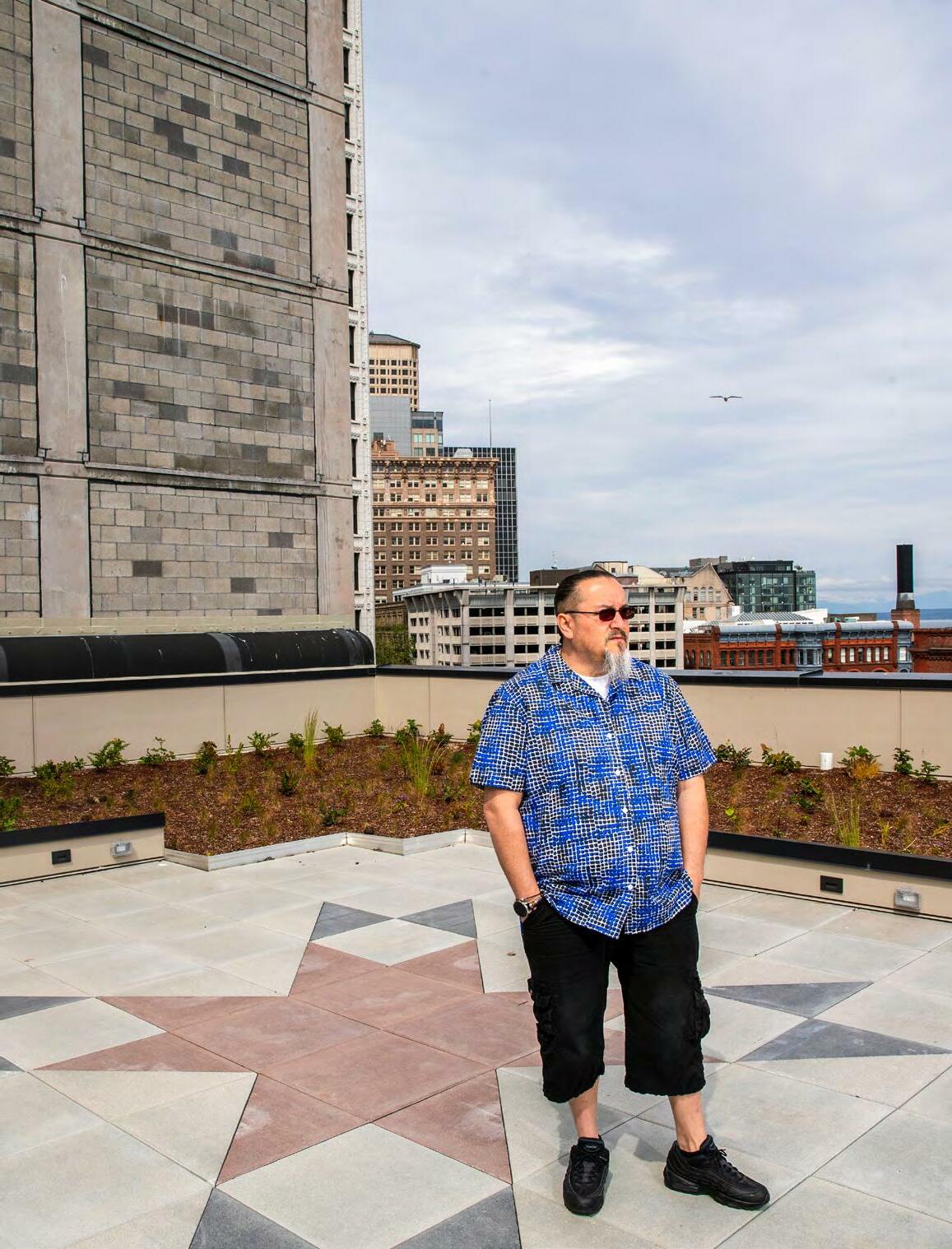
SEATTLE UNIVERSITY MAGAZINE | FALL/WINTER 2022-23 27
Chief Seattle Club (CSC) is a Native-led housing and human services agency dedicated to physically and spiritually supporting American Indian and Alaska Native people. Guided by Executive Director Derrick Belgarde, ’13, ’15 MPA, CSC embraces the Indigenous cultures, languages and traditions of its members as the primary method for healing and transformation.
Belgarde began his CSC career as program manager in 2015, when the club had 10 employees. He moved on to deputy director in 2017 and since becoming executive director in 2021, he’s now leading more than 80 team members.
Each service at CSC is culturally appropriate and tailored for the marginalized Native community. Among its many programs, CSC focuses on homelessness, permanent housing solutions, domestic violence and sexual assault support, legal services, Native art job training and re-entry assistance for those recently released from prison.
After earning his associate’s degree, Belgarde chose to transfer to Seattle University knowing he wanted to dedicate his career toward nonprofit and social justice work. SU was the right fit on account of its mission to educate the whole person. “It’s not just about building careers—it’s also about social justice and building a humane and just world,” he says.
more than a home
In February 2022, CSC achieved a major milestone of opening its first affordable housing building in Pioneer Square
named a?ál?al, “home” in the Lushootseed language.
Belgarde explains CSC’s landmark housing facility, consisting of 80 studio apartments, took a lot of perseverance. The fact that few seemed to believe in their vision didn’t stop them as Belgarde and his predecessor refused to take no for an answer.
“We just kept going and had one heck of a capital campaign that raised a lot of money. We’ve done a good job of marketing the Native disparity and the Native issues that have been neglected for decades and pushed it on [both] the public agenda and mindset,” he says.
An enrolled member of the Confederated Tribes of Siletz Indians of Oregon and the Chippewa-Cree from Rocky Boy Montana, Belgarde says “Native Americans are the least likely to get support services from state offices, government offices or to get housing assistance, food stamps, etc.” He attributes this to established administrative processes. “Administration is like a science now—it might make sense to westernized thinkers, but westernized and colonized systems impact the well-being of Native Americans.”
As noted on the CSC website, Native Americans face the highest poverty rate of any racial group in King County. Of the 12,000 homeless people in King County, more than 15 percent are American Indian or Alaskan Native. Belgarde sheds light on why there isn’t a one-size-fits-all solution when it comes to providing homelessness resources and support.

“The streets eat people alive,” says
Belgarde. “Our Native community has been through so much for 500 years that PTSD is off the charts. The trauma is just unimaginable and our Native community, who is suffering the most, aren’t going to reach out to non-Native providers.”
Some established approaches for fighting homelessness—like providing a set number of shelter beds and ushering people in—“don’t take the Native culture into consideration.”
“Natives don’t go to a shelter” where they’re the only one among a large group, explains Belgarde. “They’re not going to feel safe or welcomed. They’re going to feel threatened … disrespected and that their culture is disrespected by everything they see in the shelter.”
To access “those hard-to-reach communities like mine, you have to offer specific services. That requires a place where you can build trust, friendships and relationships, then you start working on the healing,” says Belgarde.
healing from within
With a goal of providing trauma-informed services that center healing, safety and community, CSC launched its first domestic violence and sexual assault program in 2020.
While there were efforts of outside providers offering free support at CSC, it was difficult to create changes due to challenges around relating to the chronically homeless, female-identifying members. When it comes to offering support in this area, Belgarde notes this is a totally different intersectionality.
28 SEATTLE UNIVERSITY MAGAZINE | FALL/WINTER 2022-23
“When you’re working with somebody who is chronically on the streets, every meeting you have is going to be like a first meeting all over again,” he says.
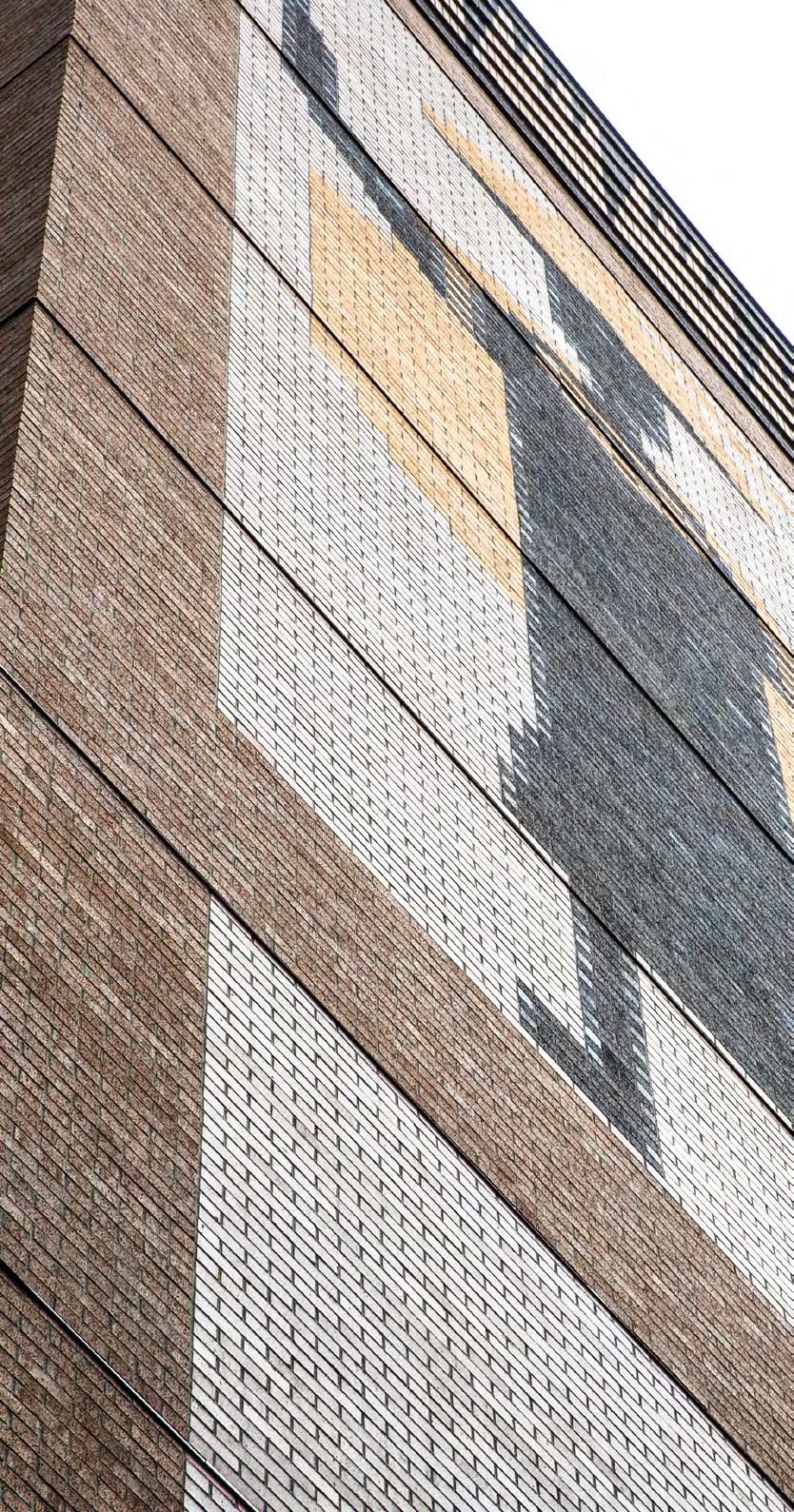
“After seeing our women come into CSC battered and bruised,” Belgarde and his staff knew they needed to develop their own services, despite being up against the issue of victims refusing to talk out of fear of abuser retaliation. They understood the best approach was to hire someone internally with an understanding of chronic homelessness and relationship building.
“That’s what is really needed, because women out there on the streets—not just of the Native community but all women living on the streets—are sexually and physically assaulted more frequently, often by their own partner.” And typically, victims feel that they have no choice but to stay with these partners, as they offer protection from random assaults.
Launching this new program during the start of the pandemic has prevented full utilization of the model CSC developed, but Belgarde is hopeful this changes once the pandemic ceases.
Part of what keeps Belgarde inspired is witnessing the transformation of CSC members, individuals who enter “raw from the streets,” homeless for so long they’ve become withdrawn, disassociated and unable to speak in coherent sentences. He sees them begin to bloom after entering CSC’s shelter or long-term placement facility. There they can talk with other Native people and the layers slowly chip away by bringing people together and building community, making them feel a sense of belonging and that they’re cared for and loved.
All of this motivates Belgarde, who was recently named as one of nine members of the Seattle City Council's first Indigenous Advisory Council.
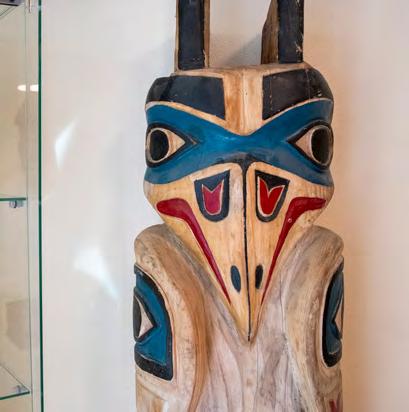
“Even though they’re suffering … when I see my people, there’s part of me that is mesmerized by their strength and their humor,” he says. “We’re going to continue building housing and we’re going to stabilize our community. It’s coming. It’s just a matter of when.”
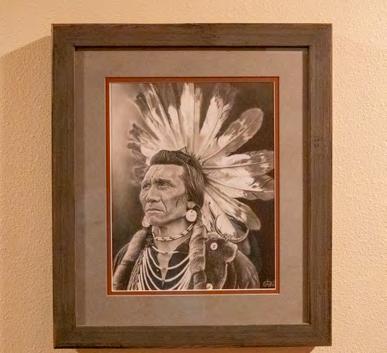
“Even though they’re suffering … when I see my people, there’s part of me that is mesmerized by their strength and their humor.” Derek Belgarde, '13, '15 MPA
Inside Chief Seattle Club are many items representing Native art including an intricately carved Totem Pole (top) and a graphite drawing of Chief Eagle by Joseph Hadi.
SEATTLE UNIVERSITY MAGAZINE | FALL/WINTER 2022-23 29
Reflections on the Past Year
A message from Ellen Whitlock Baker

Dear alumni,
One year ago, I walked onto the Seattle University campus for the first time. I’ve lived in Seattle for 20 years, yet had never set foot on the tree-and-art-filled, vibrant 50+ acres that house this institution. I imagine I felt like many of you did on your first day as a student—the nervousness of embarking on a new adventure in an unfamiliar place full of unfamiliar people.
What I found was a spectacular community, rooted in kindness and justice, that welcomed me with open arms. I found Jacob Lawrence prints around hidden corners, a vibrant Chihuly chandelier, a dramatic Tsutakawa fountain and a campus full of very good dogs. Like you, I found friends and allies, people who challenged me to do better and discovered the sustaining concept of cura personalis
In the last year, I’ve had the incredible opportunity to meet alumni, students, prospective students, families, faculty and staff in so many different venues. I’ve helped crown a Homecoming court, cheered on the Redhawks at Climate Pledge Arena and the Redhawk Center, attended the Hui O’ Nani Hawai’i lū‘au, the Triangle Club Drag Show, the School of Law holiday party and events in Tacoma and Kennewick.
My introduction to the SU alumni community extends well beyond the boundaries of Washington state. In this exceptional year introducing our dynamic new president, Eduardo Peñalver, I’ve been lucky to travel with him all over the country to meet alumni, families and prospective students on the Meet 22 in ’22 President’s Tour. Additionally, I joined Provost Shane P. Martin this spring as part of an SU delegation to meet more than 100 alumni in Saudi Arabia, Kuwait and the United Arab Emirates.
In every city and every country, we hear that you keep in touch with your professors and mentors. We hear that you still draw upon lessons learned from the Core Curriculum and are inspired by the Jesuit ethos. We hear that at Seattle University, you met your best friend, your spouse or your business partner.

We also hear from some of you that we haven’t kept in touch as well as you’d like. That you want to be involved, give your time or share your passion for Seattle University but don’t quite know how to. O r that your alumni experience hasn’t been what you hoped it would be.

Our goal is clear—the Seattle University Alumni Association (SUAA) is here to create authentic, reciprocal relationships with alumni, students and the Redhawk community. We do that by listening to and learning from you and collaboratively creating programs and opportunities that sustain this community. We have a spectacular new team at SUAA, which I encourage you to learn about at our website. Reach out and connect with any of us. We’re excited to get to know you or continue our relationship.
So, this fall, take a minute and remember what it felt like the first time you set foot on this beautiful campus. Remember what you got out of your experience at SU and consider how you’d like to continue your relationship with your alma mater. We can’t wait to hear about it.
Together we soar!
Ellen Whitlock Baker Assistant Vice President, Alumni Engagement
Visit seattleu.edu/alumni to learn how you can stay connected and engaged with the SUAA.
alumni engagement 30 SEATTLE UNIVERSITY MAGAZINE | FALL/WINTER 2022-23
Earlier this year, Seattle University’s 22nd President Eduardo Peñalver traveled across the country where he hosted a series of events with alumni, donors, prospective students and friends of the university.



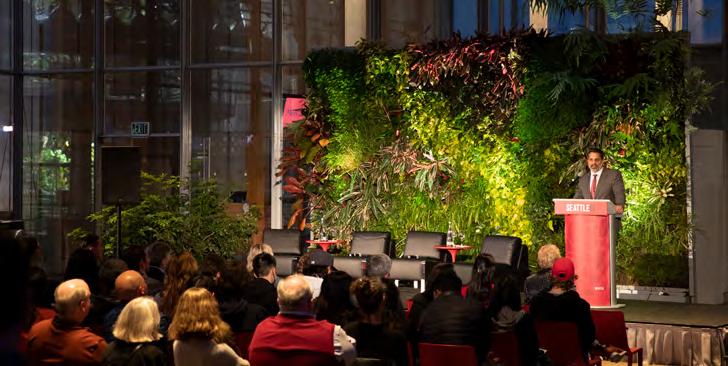
Meet 22 in ’22! was an opportunity for President Peñalver to deepen his relationships with members of the community who don’t currently call Seattle home. The tour included stops in the Bay Area, Los Angeles, Honolulu, Portland, Washington D.C., Bellevue, Tacoma and the Tri-Cities.
alumni to people who graduated decades ago all said the same things about their [time at SU], citing the student experience, our small classes, supportive faculty and staff, the warm environment on campus and the friendships they formed. It was such an affirming experience to engage with them and to hear their stories and it inspires us to carry that forward.”
Eduardo Peñalver
us for one epic day of giving as
entire Seattle University community comes together
Redhawk
care about most.
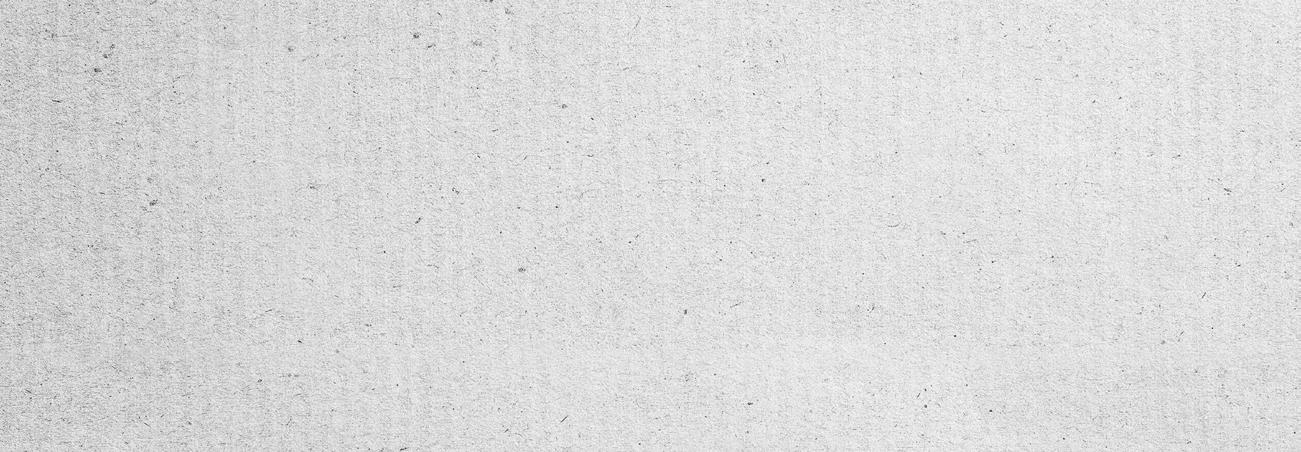
Meet 22 in ’22!
“ …Recent
—President
A+ A+ A+ 3.2.23 Join
the
to support the
causes we
save t h e date!A+ alumni engagement photos by yosef kalinko SEATTLE UNIVERSITY MAGAZINE | FALL/WINTER 2022-23 31
Four days before the start of the 2021-22 season, Chris Victor learned that he was no longer the associate head coach of Seattle University Men’s Basketball—he would be leading the team as its interim head coach. The short window meant no time to be anxious or rattled as Victor and the team were laser focused on the game.

“With the start of the season so close, we really were able to focus just on basketball,” says Victor, “which helped the team move forward.”
In March, Victor was officially named as the Redhawks’ new head coach after leading the team to one of its best seasons in decades, culminating with a Western Athletic Conference (WAC) title—for the first time ever.
Director of Athletics Shaney Fink praised Victor for his “basketball acumen … matched by his tremendous character.”
“He is a thoughtful, authentic leader who is focused on creating an environment that brings out the best in each member of the team,” says Fink. “Coach Victor is a fierce competitor who will continue to lead Redhawk basketball to new heights.”
The move from interim to permanent coach is something Victor says he is both grateful for and humbled by as he leads the team into the future.
“One of the reasons I am so honored and proud to be the coach here is because of the mission,” he says. “That’s what separates us.”
Prior to Seattle U, Victor served as an assistant coach at Eastern Washington University for two seasons. His first season on the Eagles coaching staff was highlighted by Eastern’s first-ever victory in a national postseason tournament as a member of NCAA Division I, when the Eagles beat Pepperdine, 79-72, in the College Basketball Invitational (CBI). The team went 22-12 that year and returned to the CBI in 2016-17. The following season he arrived at Seattle University as part of the coaching staff led by head coach Jim Hayford. That first season of 2017-18, the Redhawks finished 20-14 overall, 16-3 on their home court, 8-6 in WAC play and earned a berth in the CBI. The Redhawks returned to the postseason the next year, competing in the CollegeInsider. com Postseason Tournament (CIT). The Redhawks combined for 26 wins over the COVID-shortened 2019-20 and 2020-21 seasons.
by tina potterf
For Chris Victor, leading the men’s basketball team is about more than wins and losses—it’s about preparing players for life outside the game.
32 SEATTLE UNIVERSITY MAGAZINE | FALL/WINTER 2022-23
Beyond his extensive coaching prowess, Victor was a decorated player at Concordia University, instrumental in helping the team advance to the NAIA championship game in both 2003 and 2004. In the 2003 title game, he scored a season-high 26 points and dished out nine assists as he helped lead Concordia to its first national championship in program history. He also ranks in the Top 10 all-time in points and three-pointers, along with third all-time in assists and steals for the university.
Transformed by his years at Concordia, where he says he “went in as a kid and came out a man,” Victor gained insights, life lessons and connections that he carries with him today and into his coaching style. It’s because of these experiences that he became a coach.
“I played for three years at Concordia and I still, to this day, talk to my coaches and former players, my friends. The biggest life lessons I learned playing are what I try to duplicate in our players. I understand how important the growth and maturity are for these young men and it’s important that the guys we approach to play here go through that transformation. Seeing their growth is rewarding.”
This past season was punctuated with many high points, including an 8-0 start
in WAC play for the first time in 10 years competing in the league. And it took the Redhawks just 26 games to reach 20 wins, marking the 15th, 20-win season in program history. Another highlight—the team played many of its home games at Climate Pledge Arena, which Victor calls “the best home arena in the country.”
For the coach, he points out three of his most memorable moments of the past season: “One, our first home game where we won the game at the buzzer. Two, being named head coach and the reaction from the players. And three, winning the WAC Championship and the energy and excitement of the team and the home crowd.”
The 2022-23 season will see many returning players along with some new talent to fill out the roster.
“It’s about getting the right people in the program, both players and staff, that fit our culture,” explains Victor, who leads the recruitment process. “Once we have the people in place, it’s about a commitment to something bigger than themselves.”
And with the pieces in place—and building off the recent success—there is buzz and excited optimism about what’s to come for men’s basketball at Seattle University.
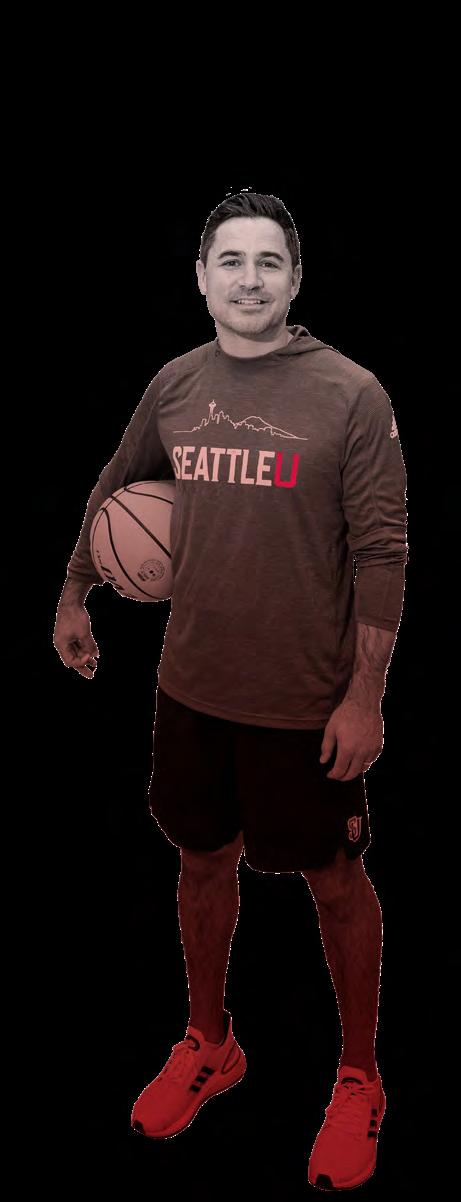
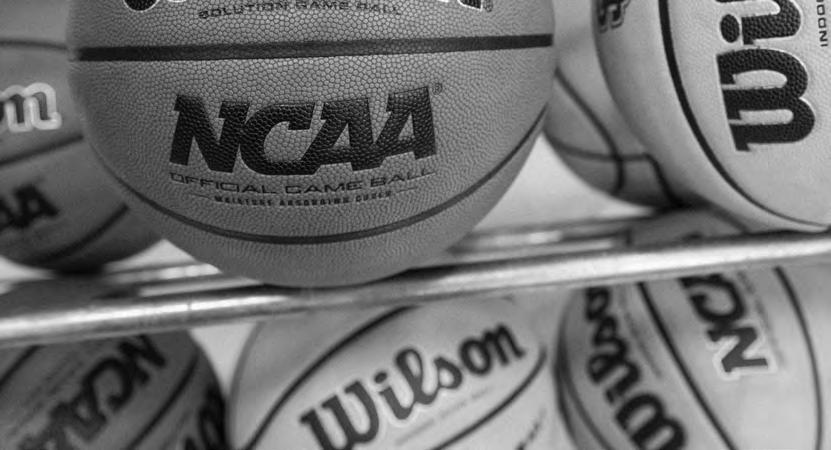
Coach Picks
Favorite thing to do off the court:
Spending time with wife Sara and son Leo and exploring Seattle.
Favorite recently binged TV show: Lincoln Lawyer on Netflix
Favorite musician or genre:
Currently Leon Bridges and country music
Favorite place in Seattle: Anywhere by the water
Men’s basketball kicks off the season November 7 in San Diego and at home November 9. For more information and tickets, visit GoSeattleU.com
“One of the reasons
I am so honored and proud to be the coach
photos by yosef kalinko SEATTLE UNIVERSITY MAGAZINE | FALL/WINTER 2022-23 33
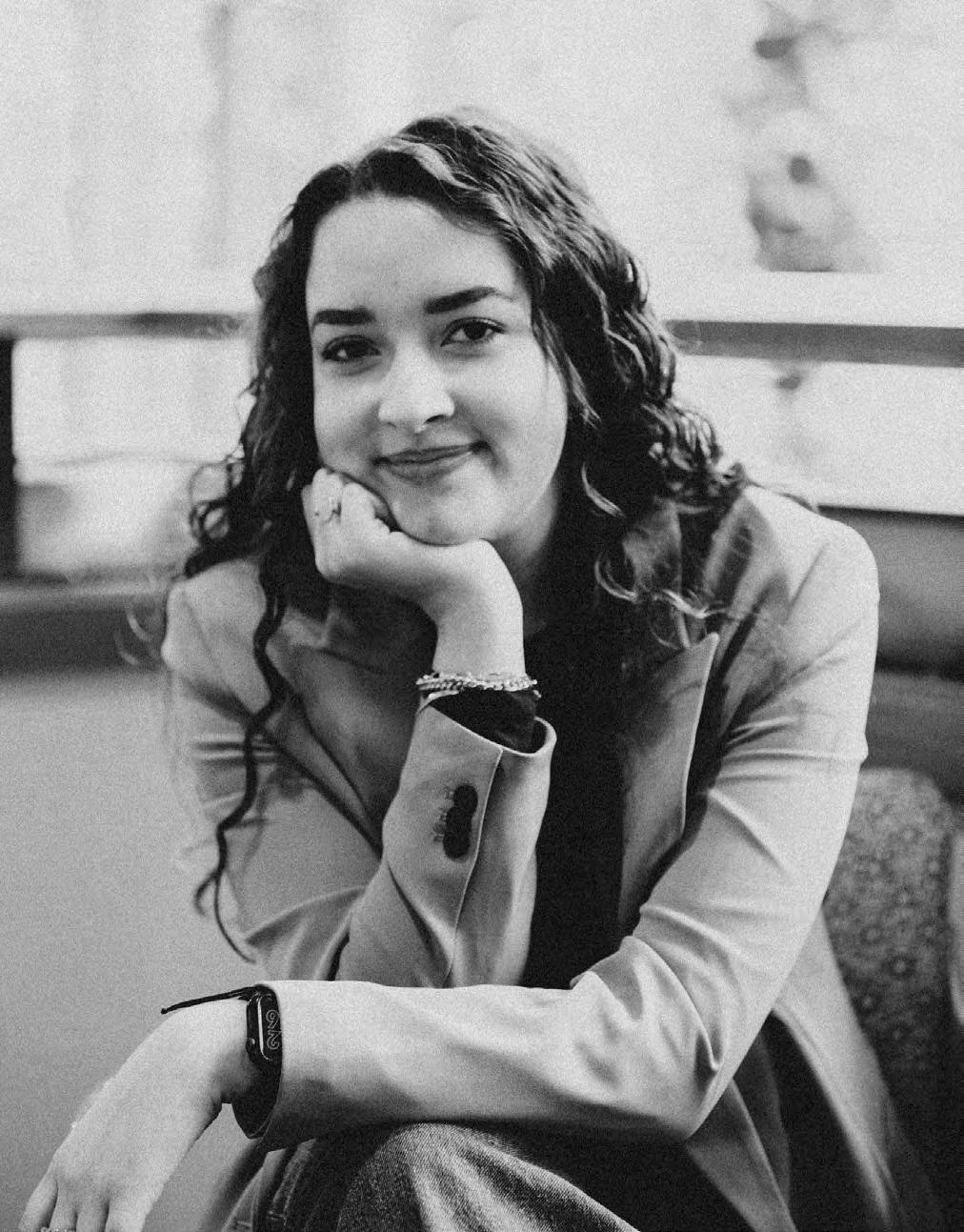
LAST WORD 34 SEATTLE UNIVERSITY MAGAZINE | FALL/WINTER 2022-23
Braelyn Scheer
by sofia marti, '23
“Are
we thriving or are we surviving?” asks new Student Body President Braelyn Scheer, '23.
As the school year came to a close, so too did the voting for the new cabinet of the Student Government of Seattle University (SGSU). All members of SGSU represent different parts of the student body, but the one position that serves as a voice for all is the Student Body President. And this fall Scheer officially began her tenure in this role.
While pursuing a degree in Political Science and double minors in Spanish and Sociology, Scheer is already involved in so much on campus including SGSU, where she previously served as Executive Vice President. Prior to coming to SU Scheer, from Buckley, Wash., earned an associate degree by doing Running Start in high school. Before she graduates from SU, she wants to make a difference and leave an imprint on the university that will better the experience for all who follow.
“Shared passion is really rare and a lot of us have been deprived of that,” Scheer says about her reasons to continue in student government. “Gaining that this year at SGSU has truly been a gift and that’s why I wanted to continue serving this fall. I didn’t want to sit back and wait
because these past two years has been too much waiting.”
In her time with SGSU, Scheer has worked on several initiatives, including helping organize Mental Health Awareness Week and working with Chartwells, the university’s food services partner, to provide nutritious meals at a lower cost.
“As president, it’s not me showing up telling SGSU what to do. I see my role as a bridge between students and the administration,” she says. “I believe my biggest responsibility over this next year is empowering the student representatives on the cabinet to do the best job they can.”
Another priority is around engagement and building community that is authentic and reflective of the student population. Scheer has noticed there is a reluctancy among some students to get involved or participate in activities and events, likely because of a feeling of not belonging or uncertainty around where to start. She wants SGSU to be that place for all students.
“I want better communication between SGSU and the student body so that we are a more visible resource that students feel comfortable and encouraged to use.” says Scheer.
Braelyn’s Faves
Music, artist or band: Frank Ocean Bingeable TV show: Twenty Five Twenty One Study space on campus: Casey Atrium Place in Seattle: Japanese Gardens Author:
Taylor Jenkins
Reid
Getting students more involved and elevating their voices are among the priorities of new Student Body President.
YOUR NEXT PRESIDENT
SEATTLE UNIVERSITY MAGAZINE | FALL/WINTER 2022-23 35
SOAR WITH REDHAWK LANDING
Redhawk Landing’s mentoring and networking platform opens doors for alumni and students alike, connecting them to a powerful online resource where Seattle University’s community members can build meaningful connections and professional mentoring.
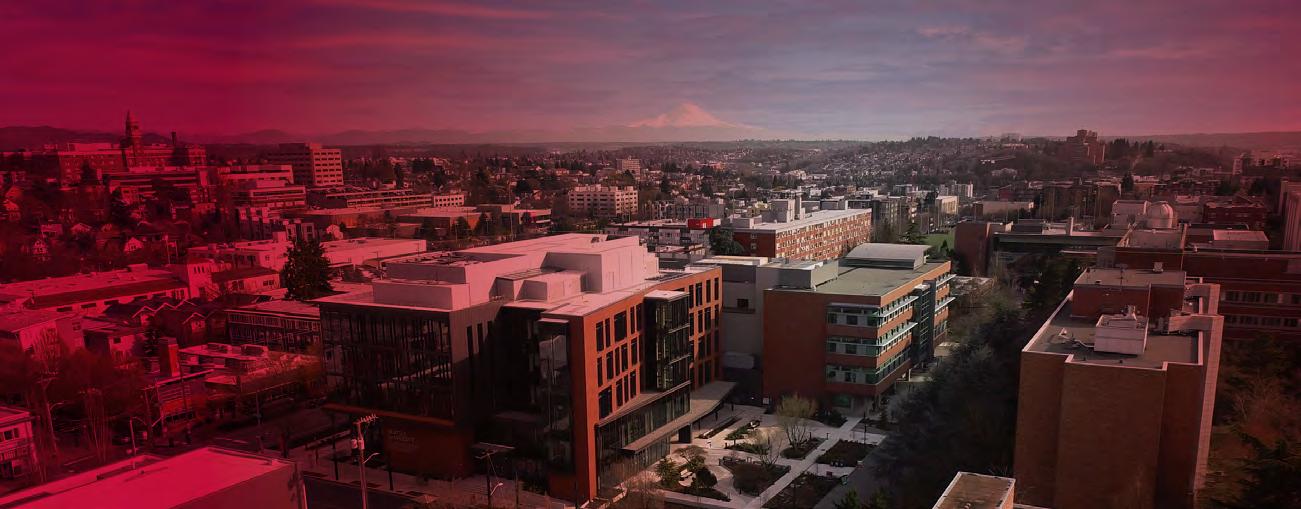
Learn more and upload your profile in just two minutes!
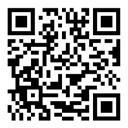
SEATTLE UNIVERSITY 901 12th Avenue PO Box 222000 Seattle, WA 98122-1090





 Tina Potterf
Tina Potterf
 Kalinko
Kalinko















































 by allison nitch and tina potterf
photos by yosef kalinko
by allison nitch and tina potterf
photos by yosef kalinko




























